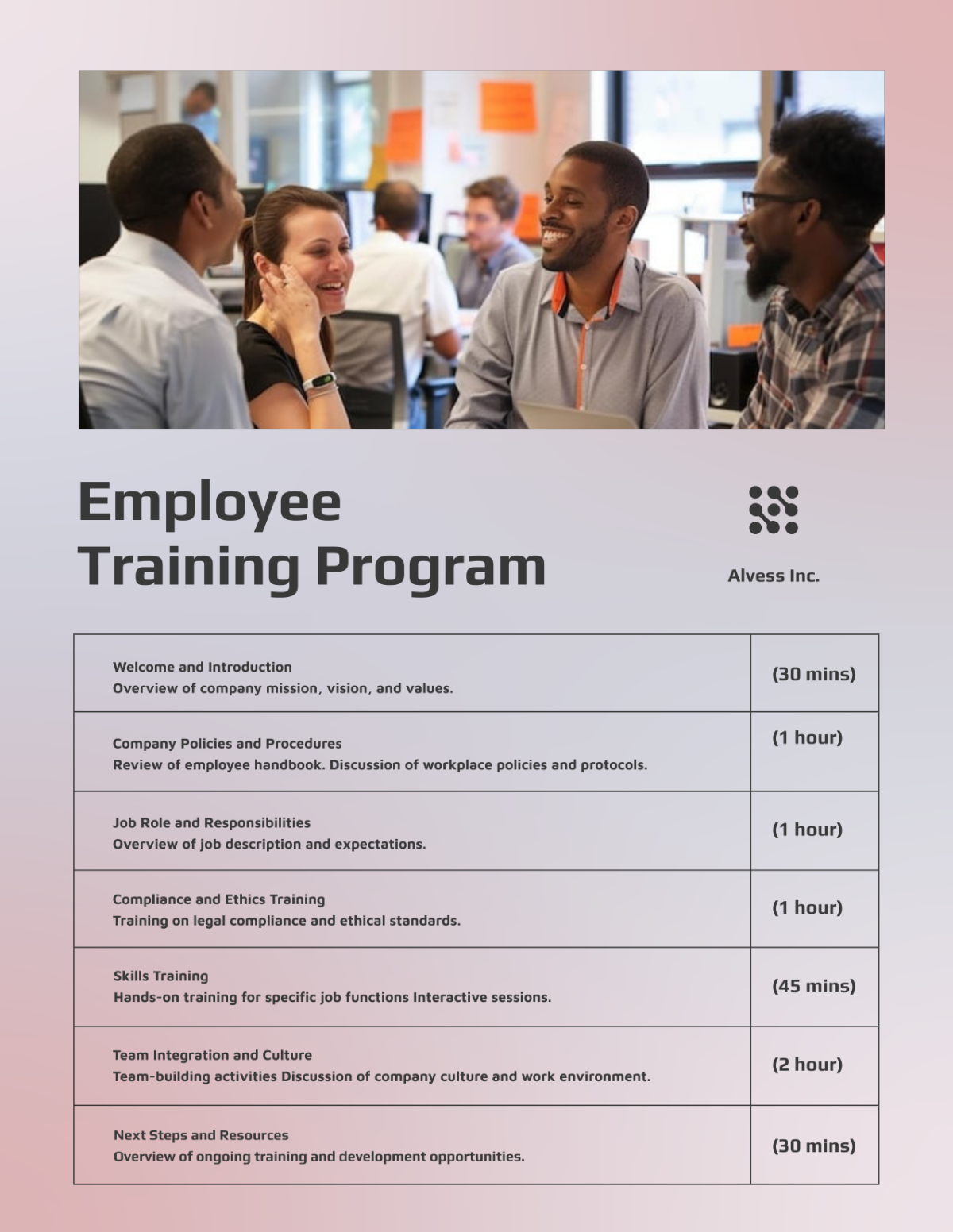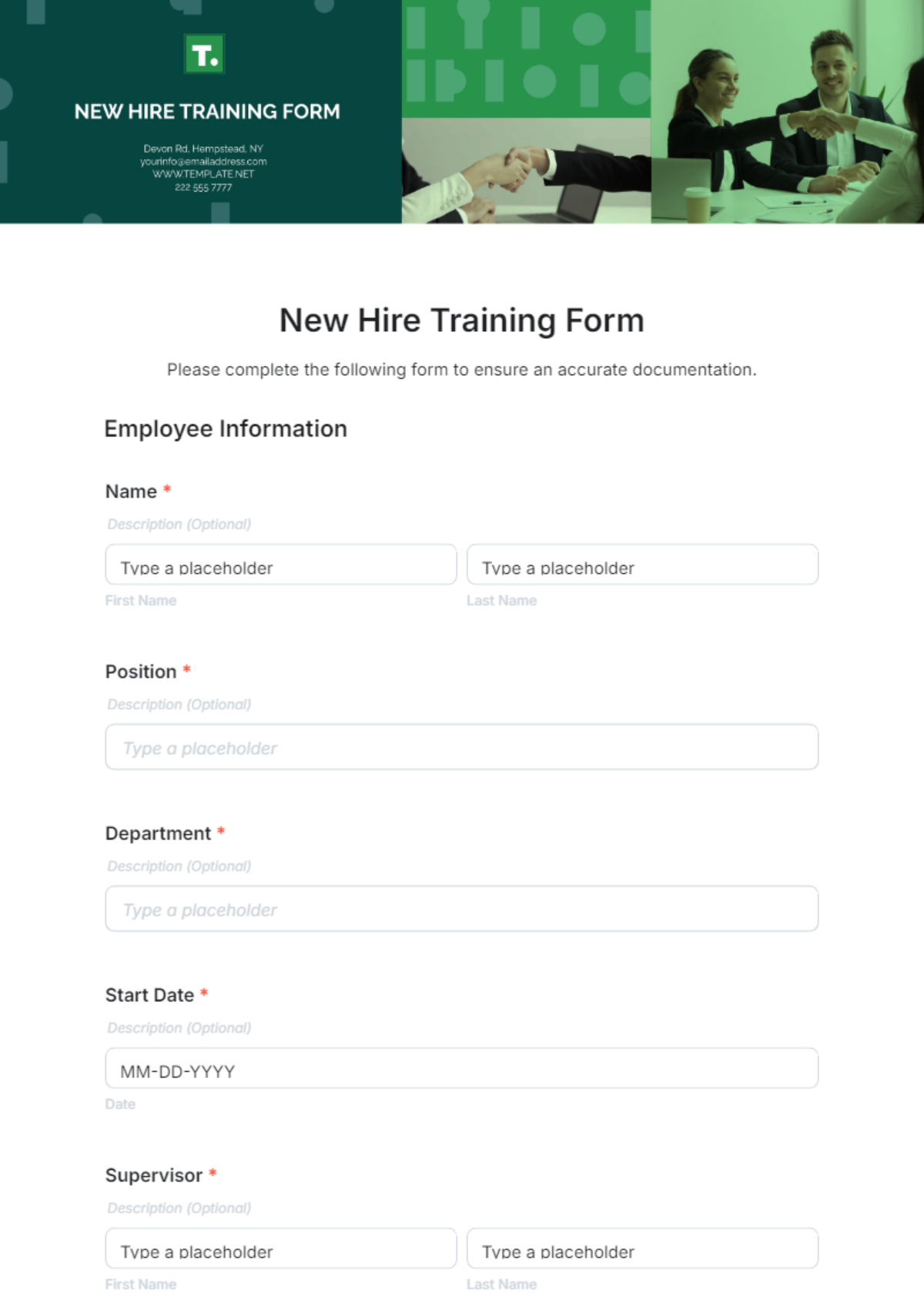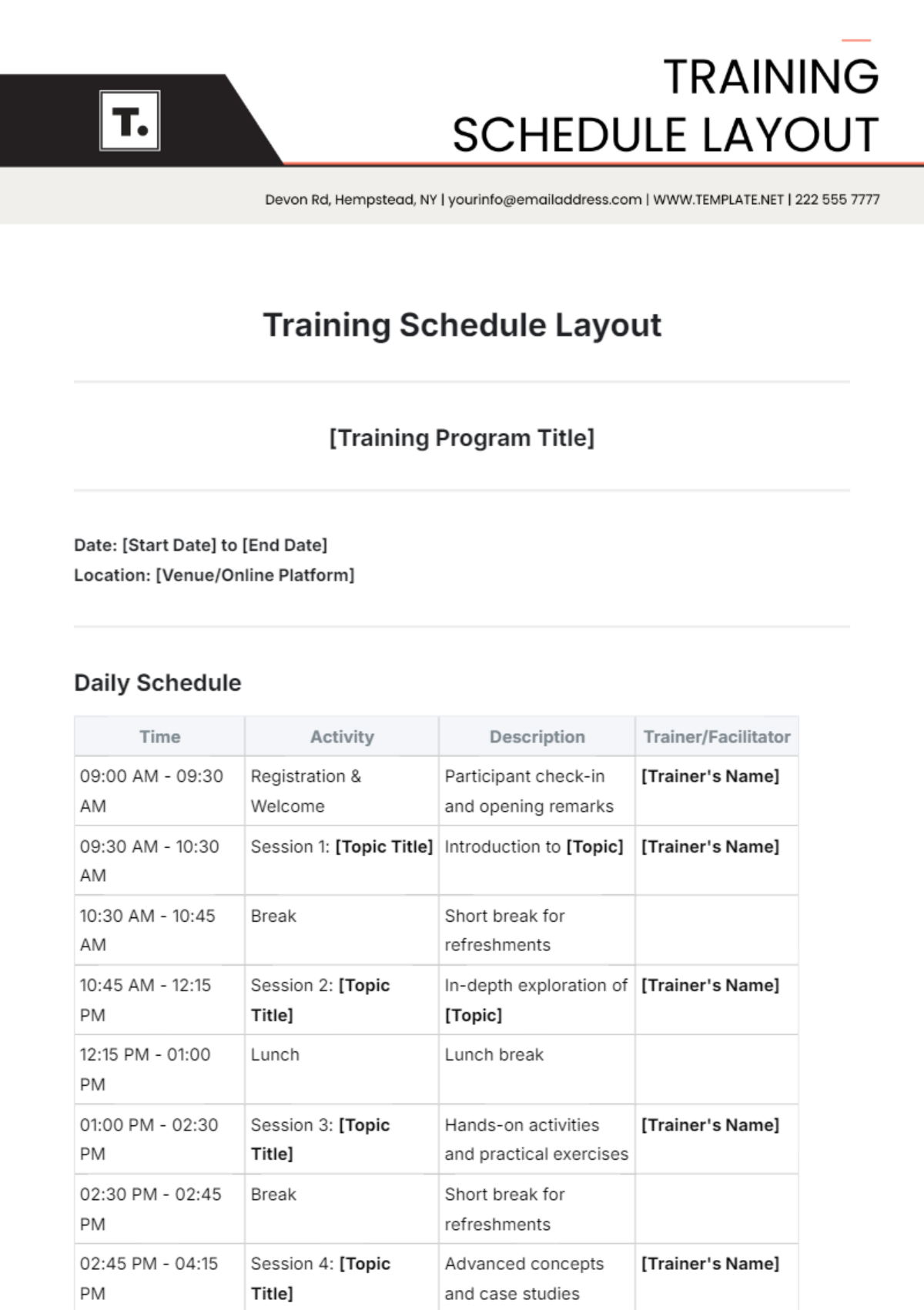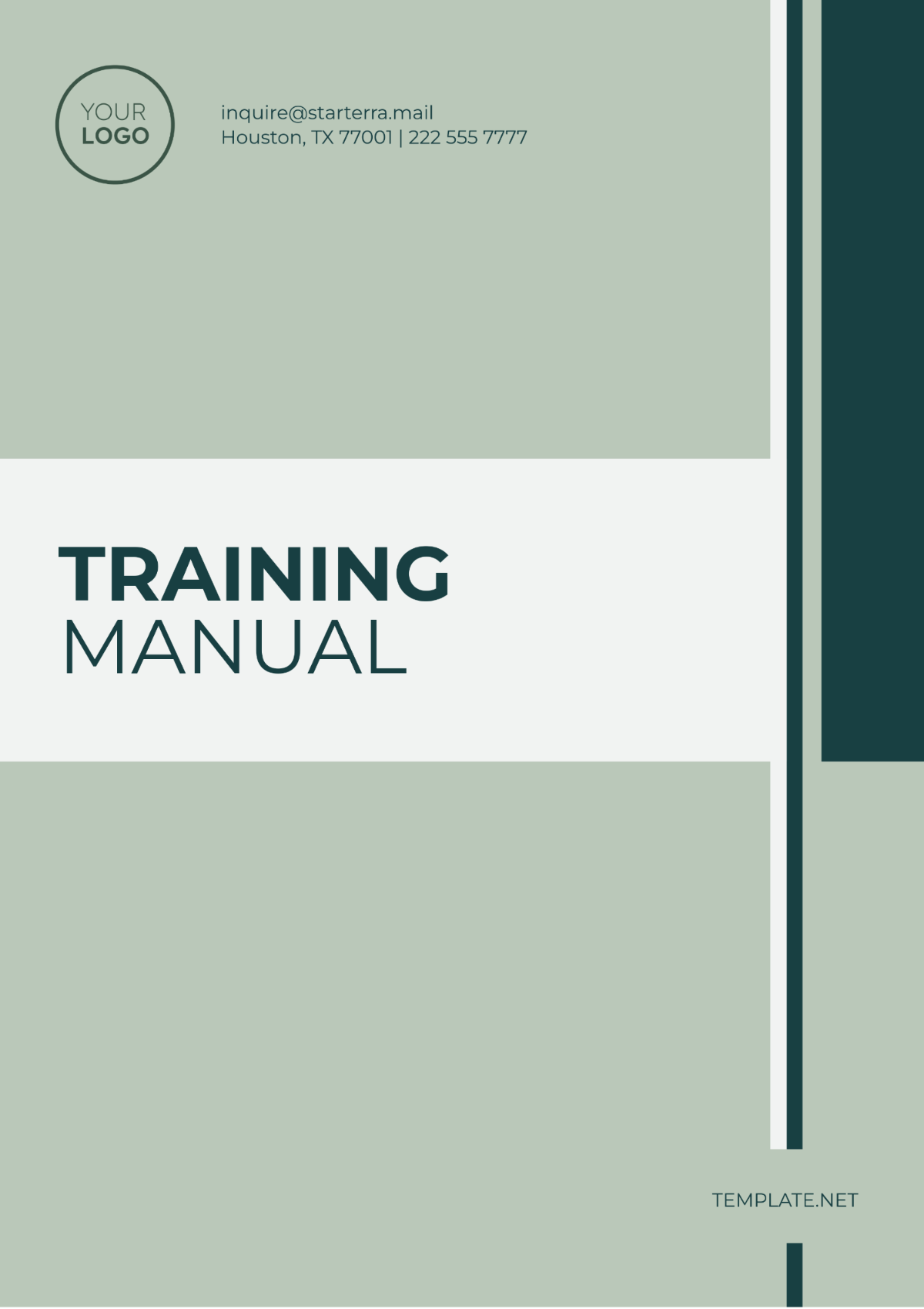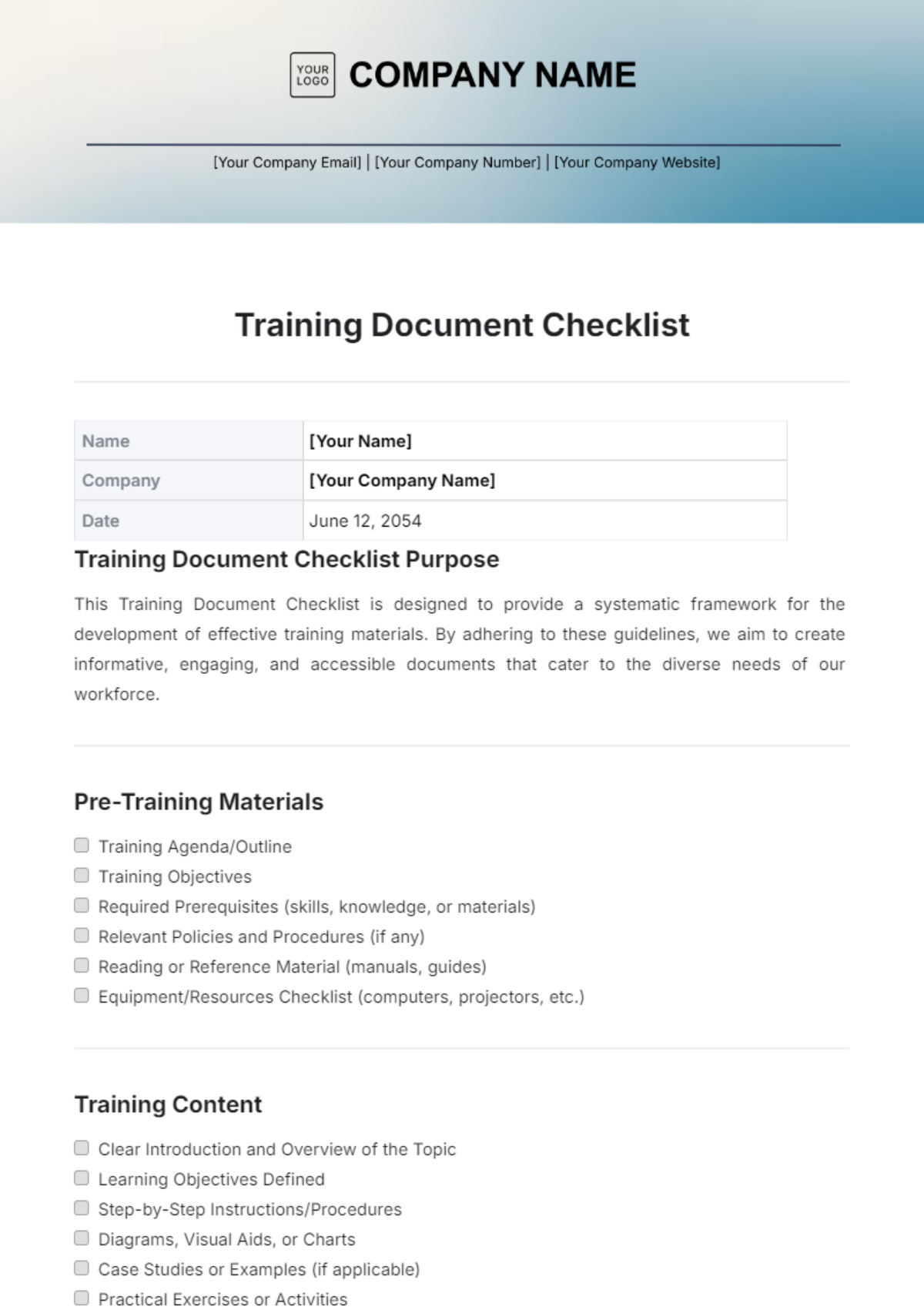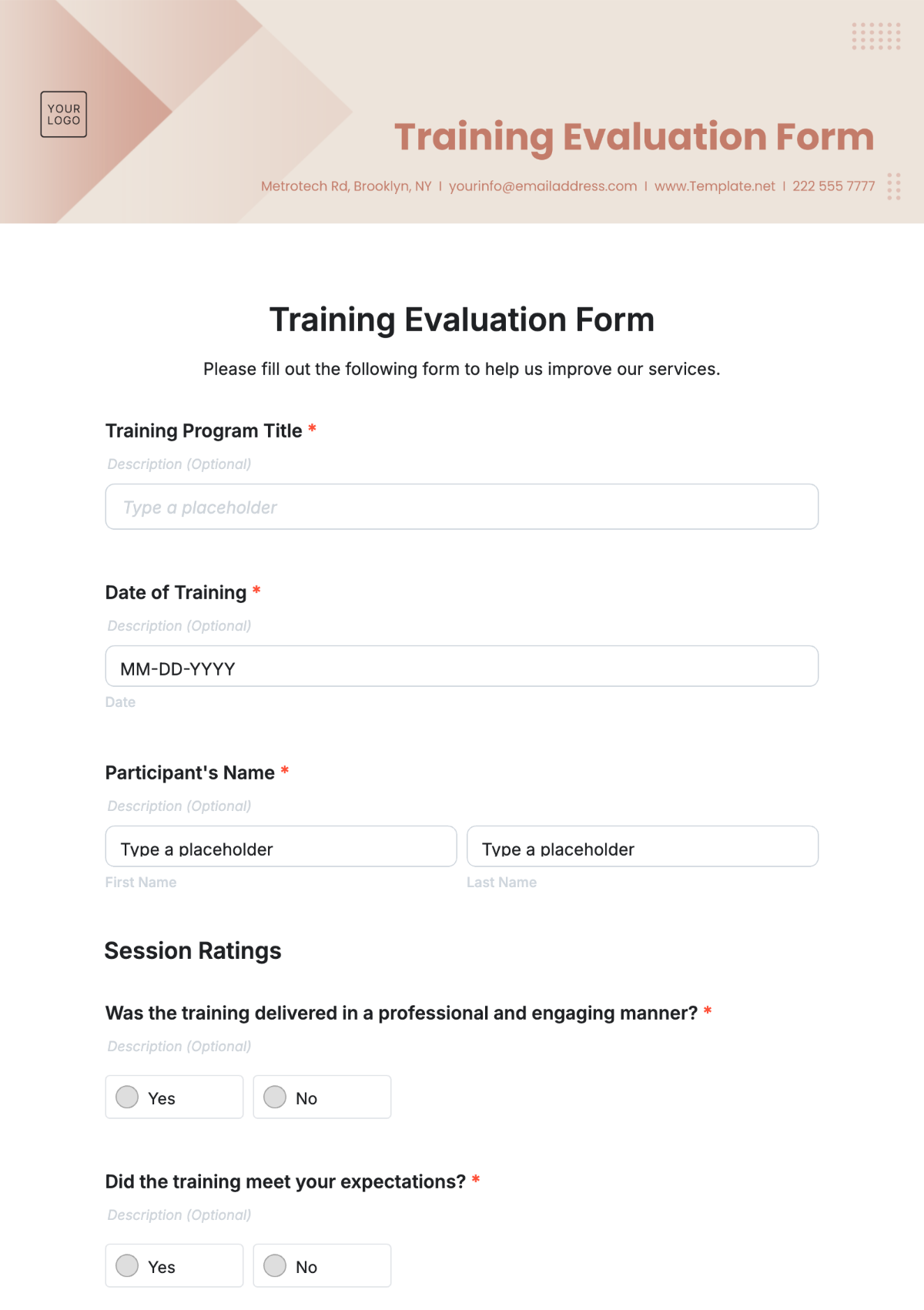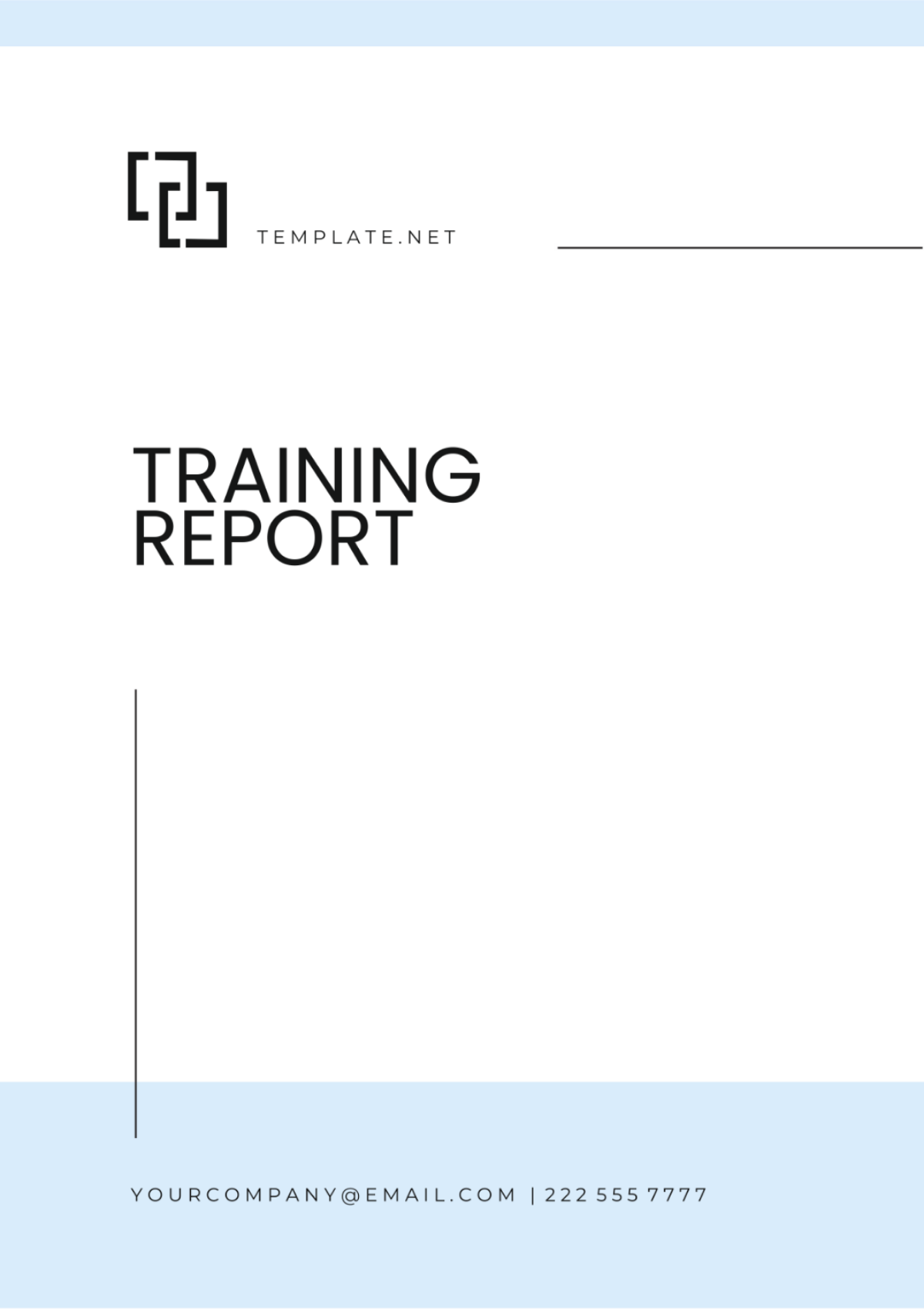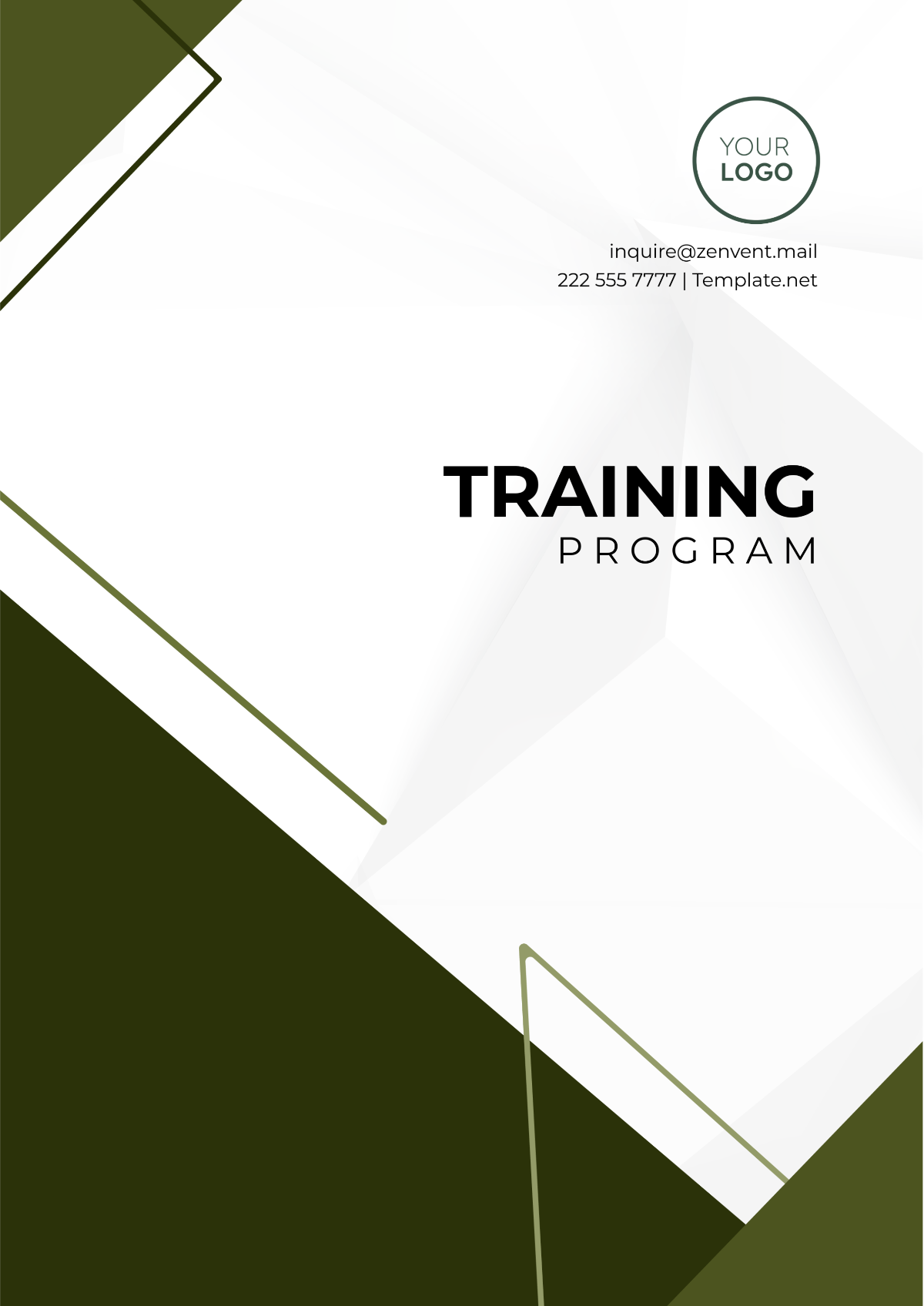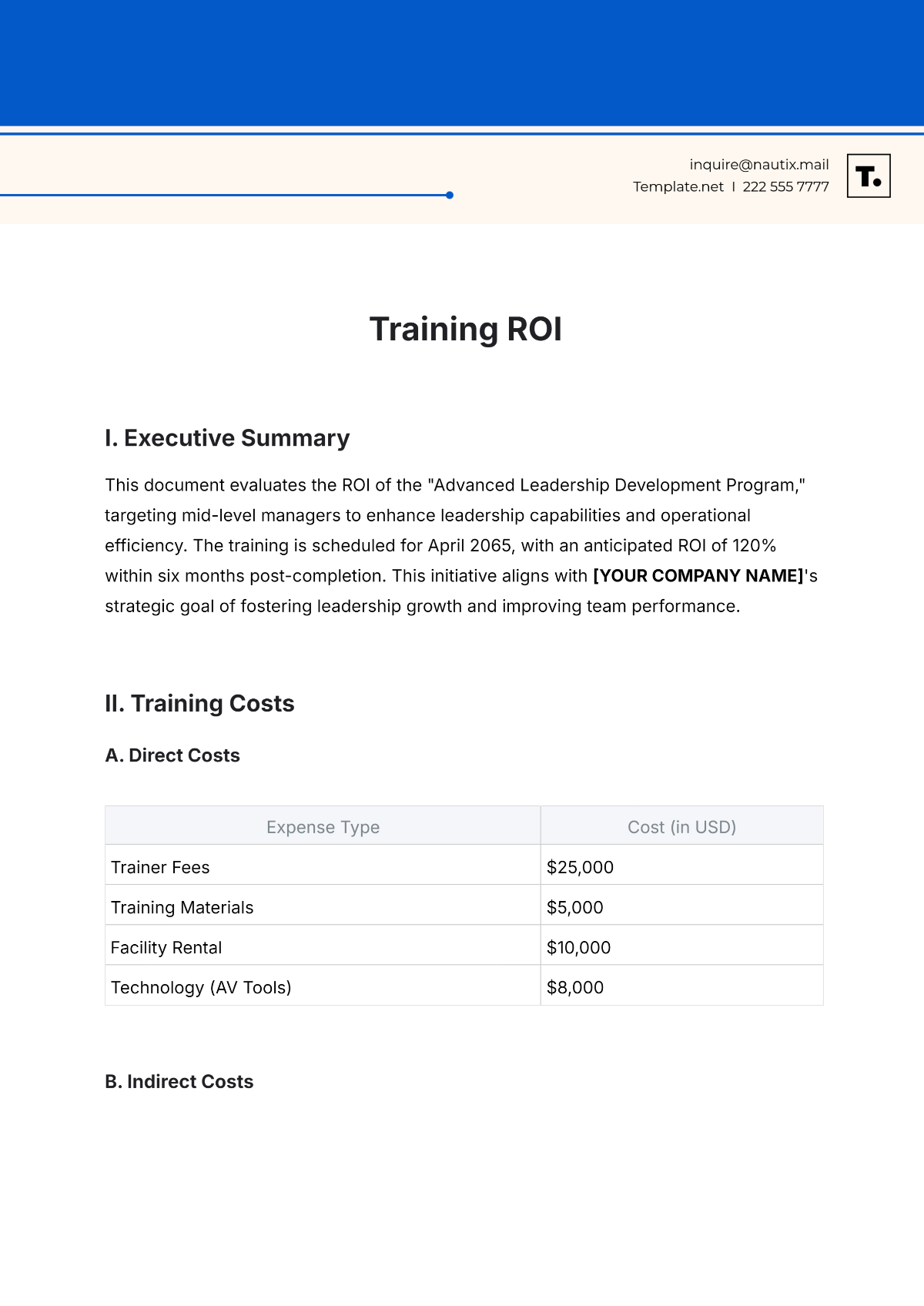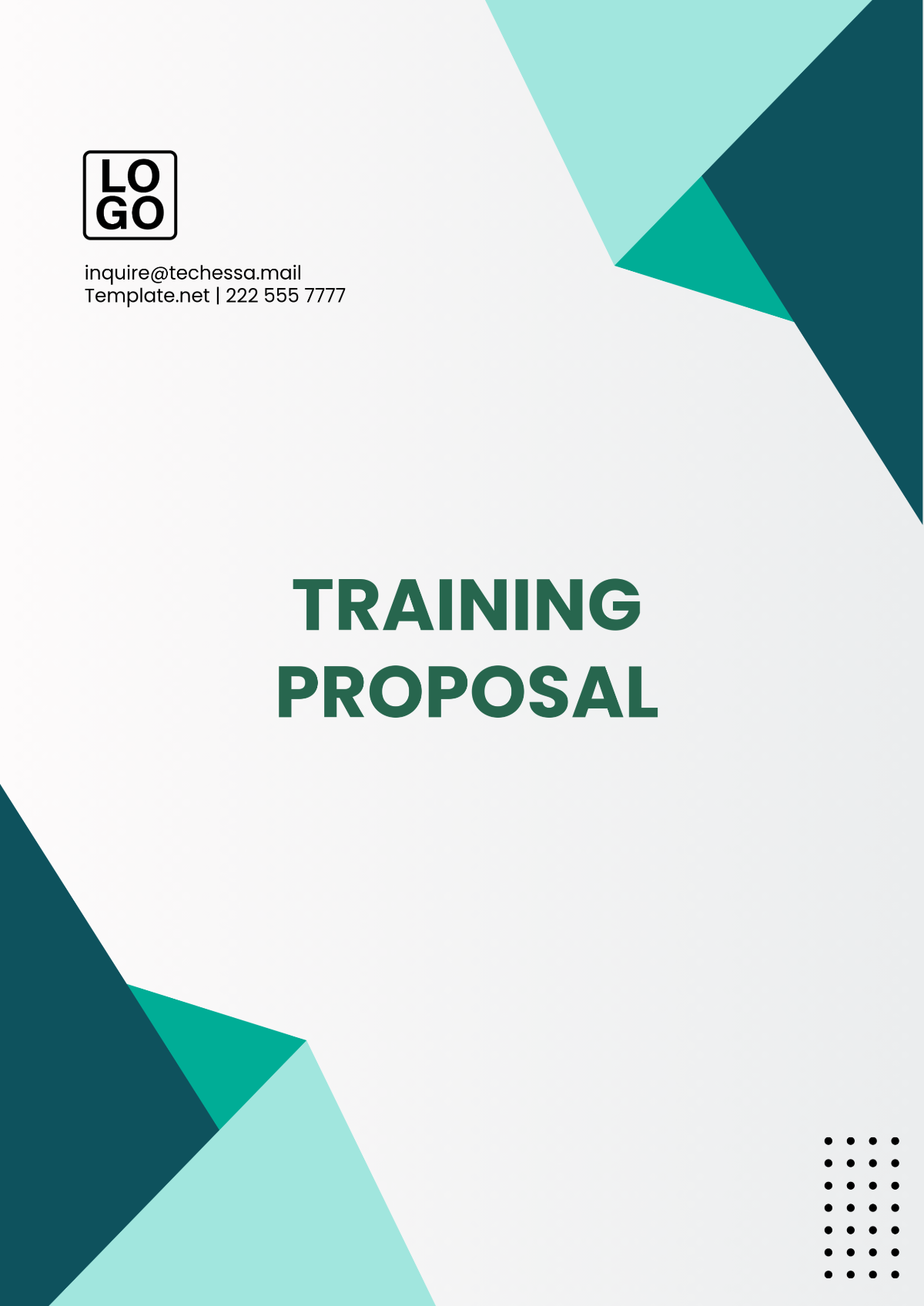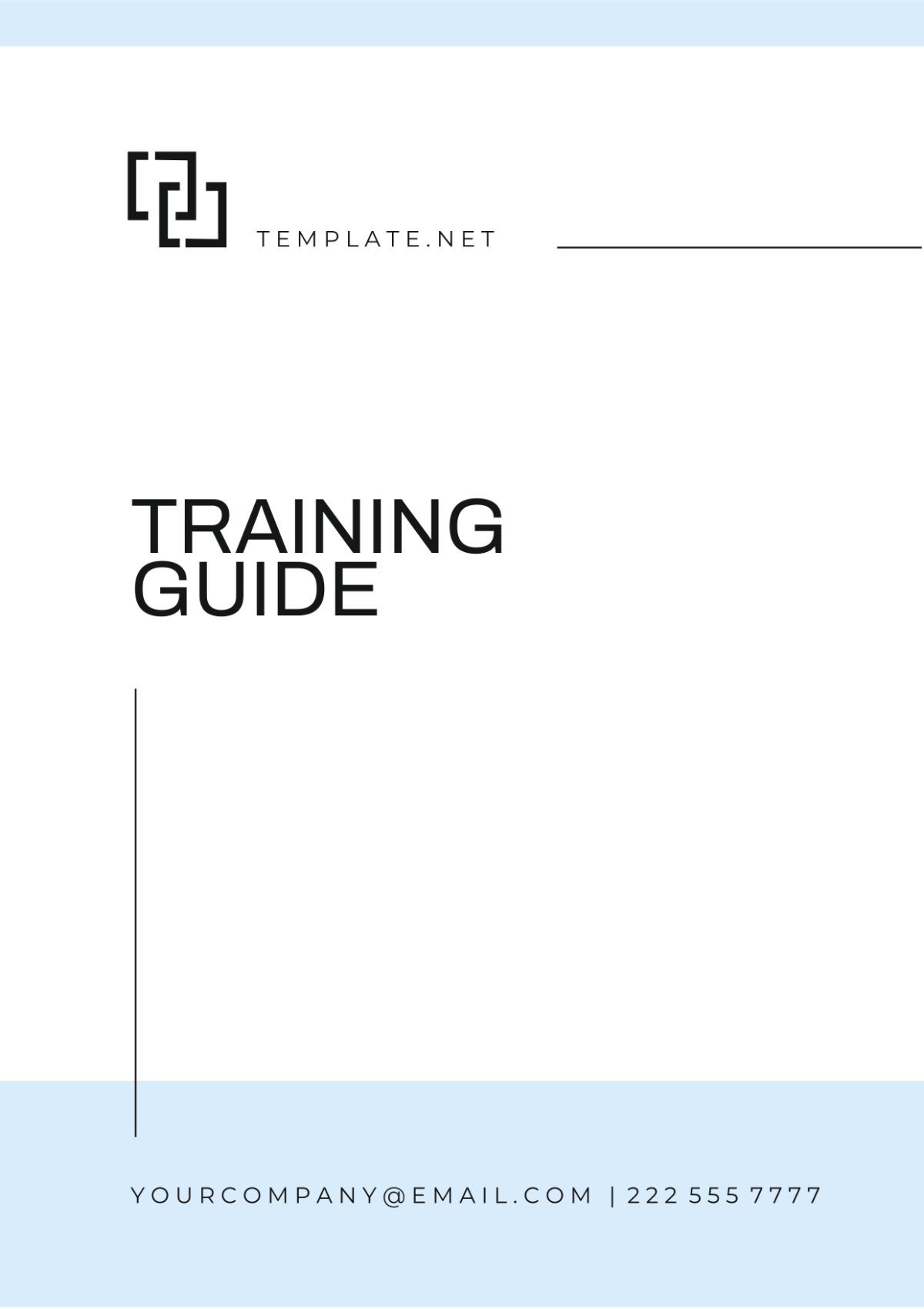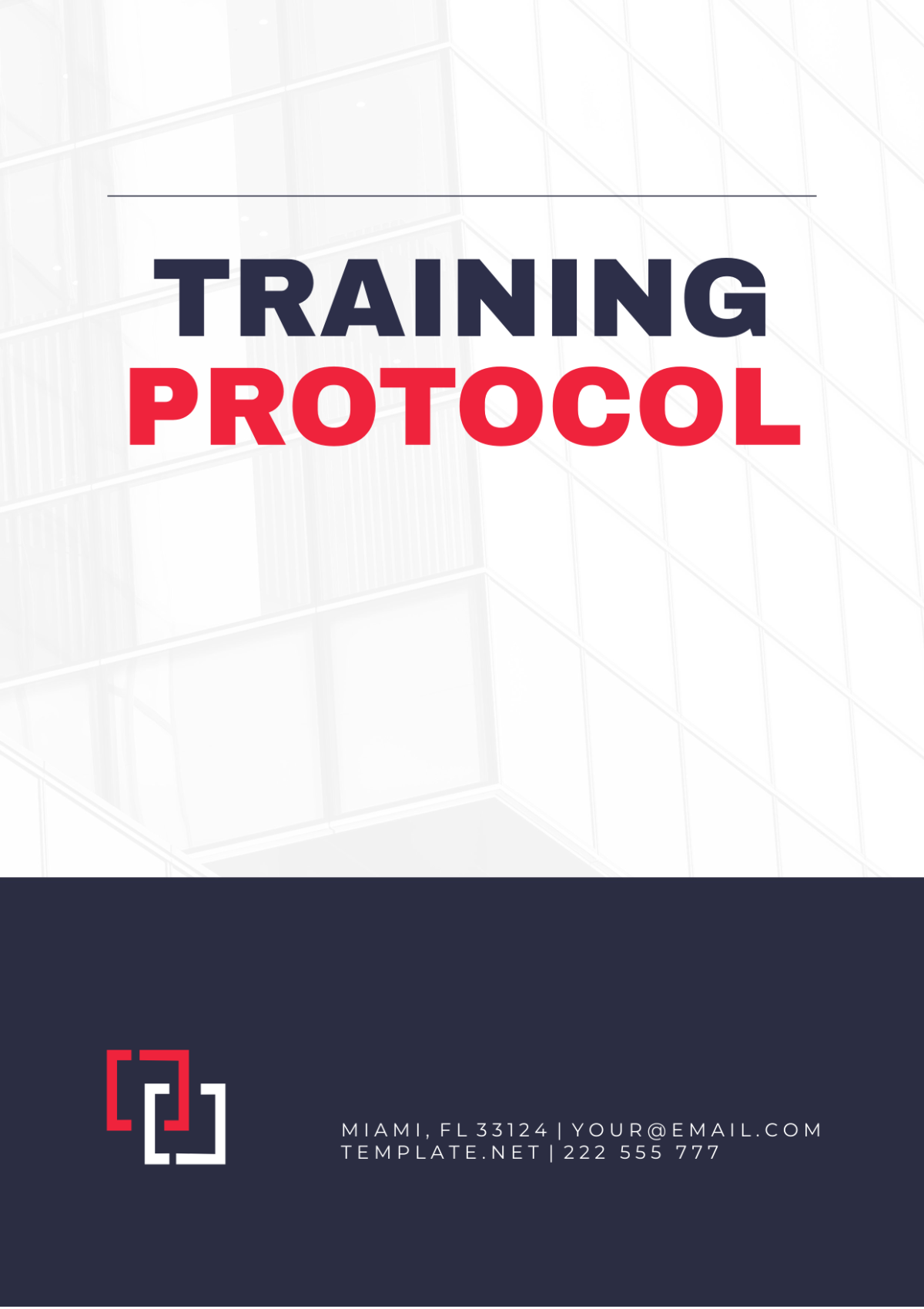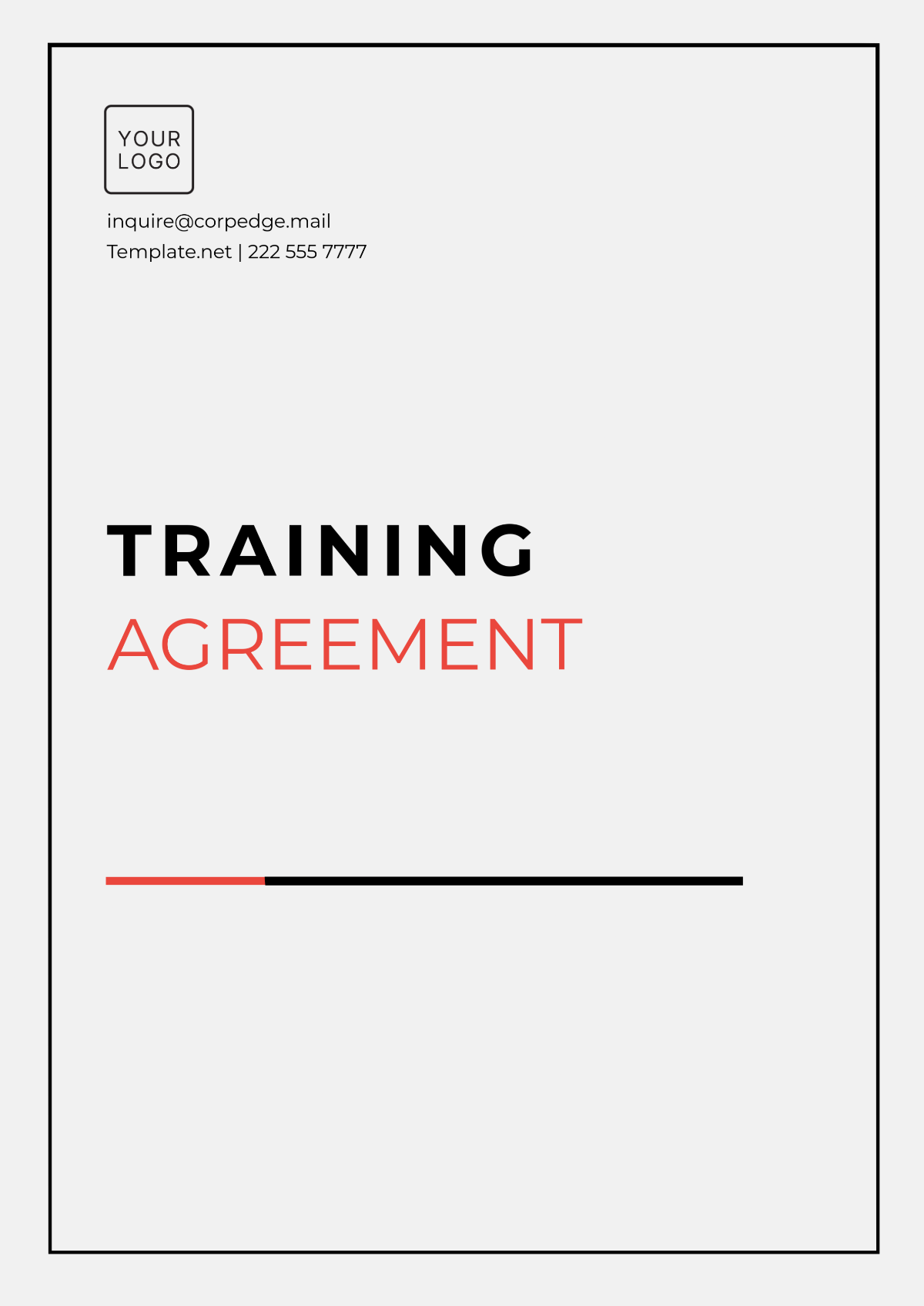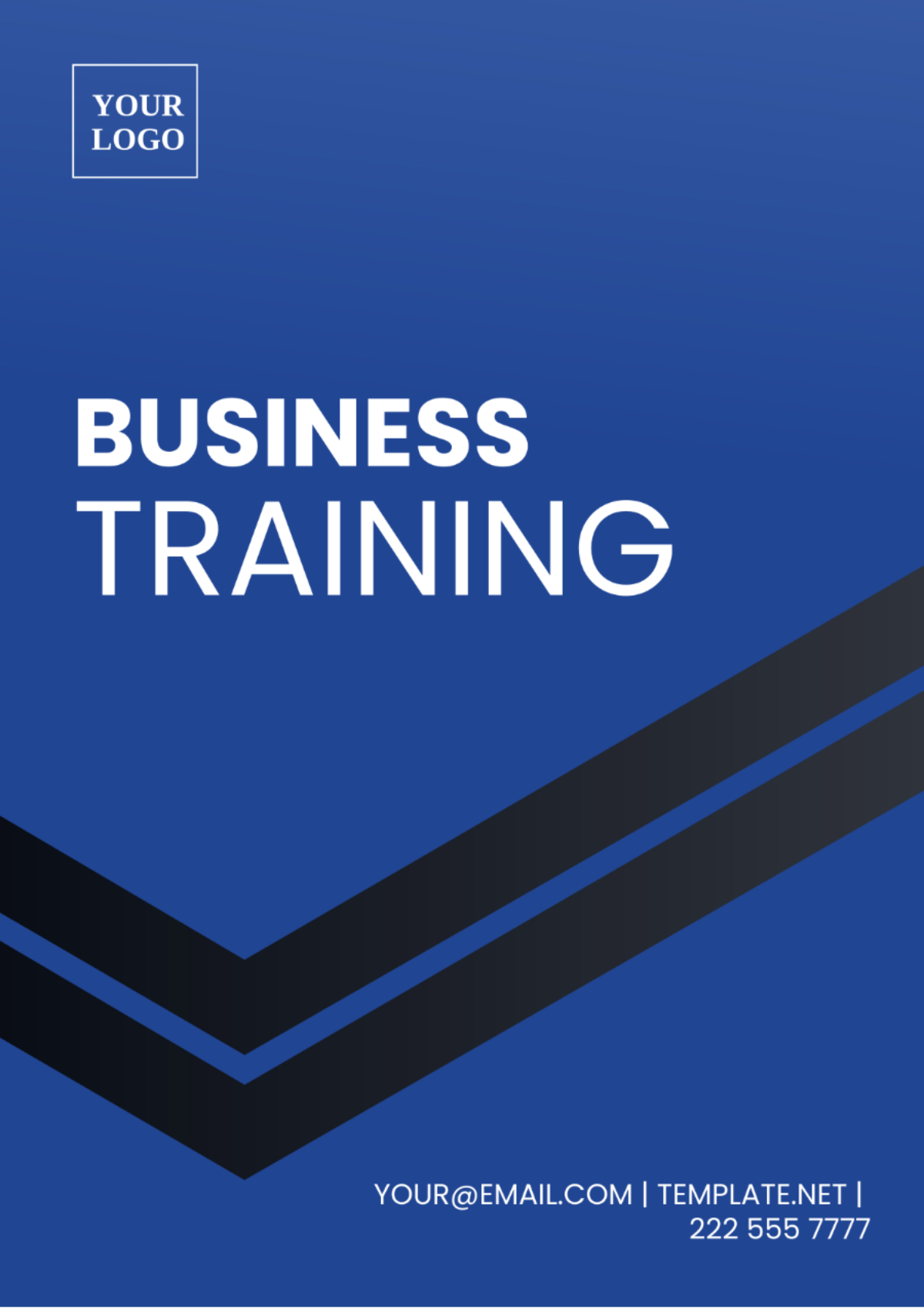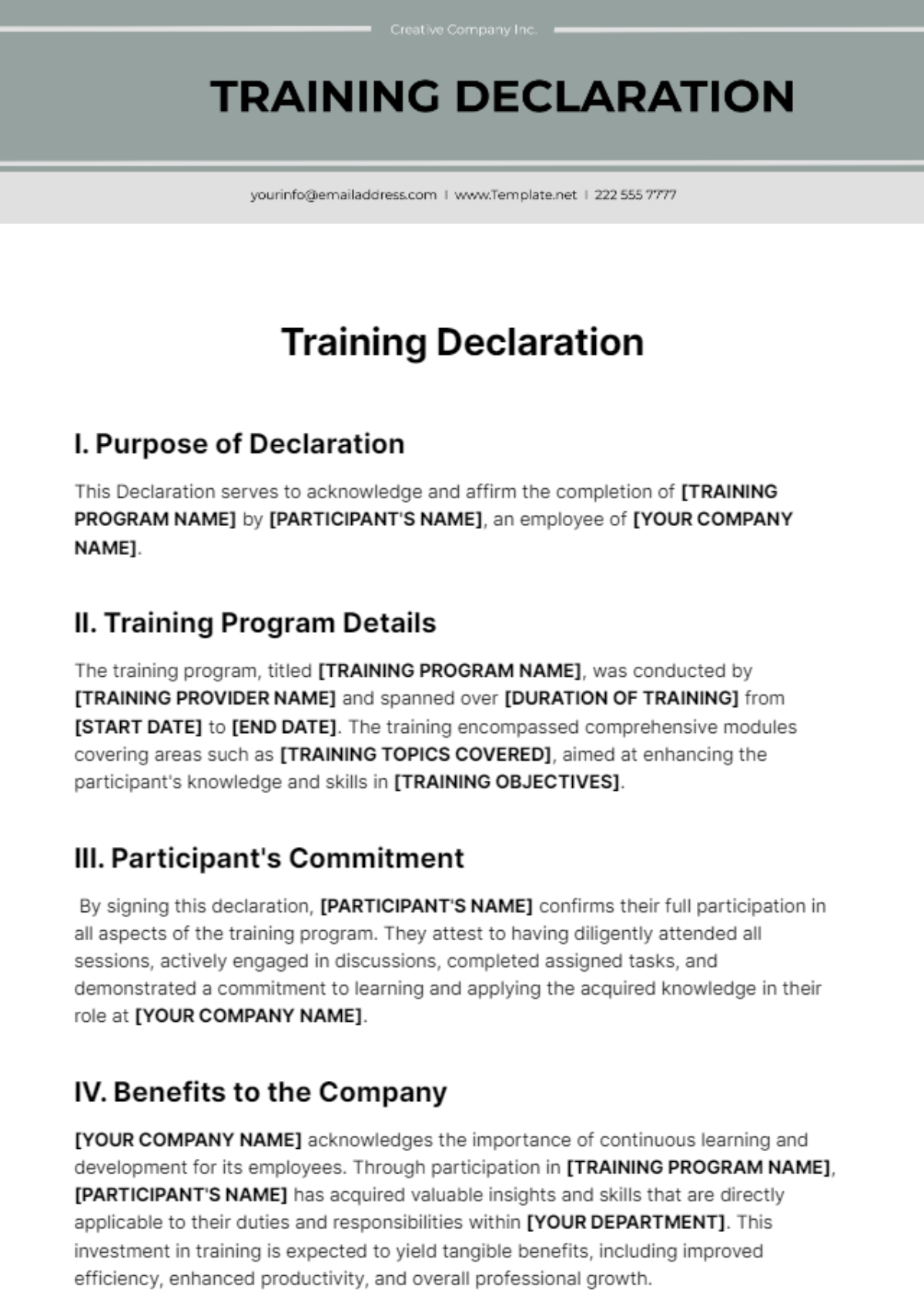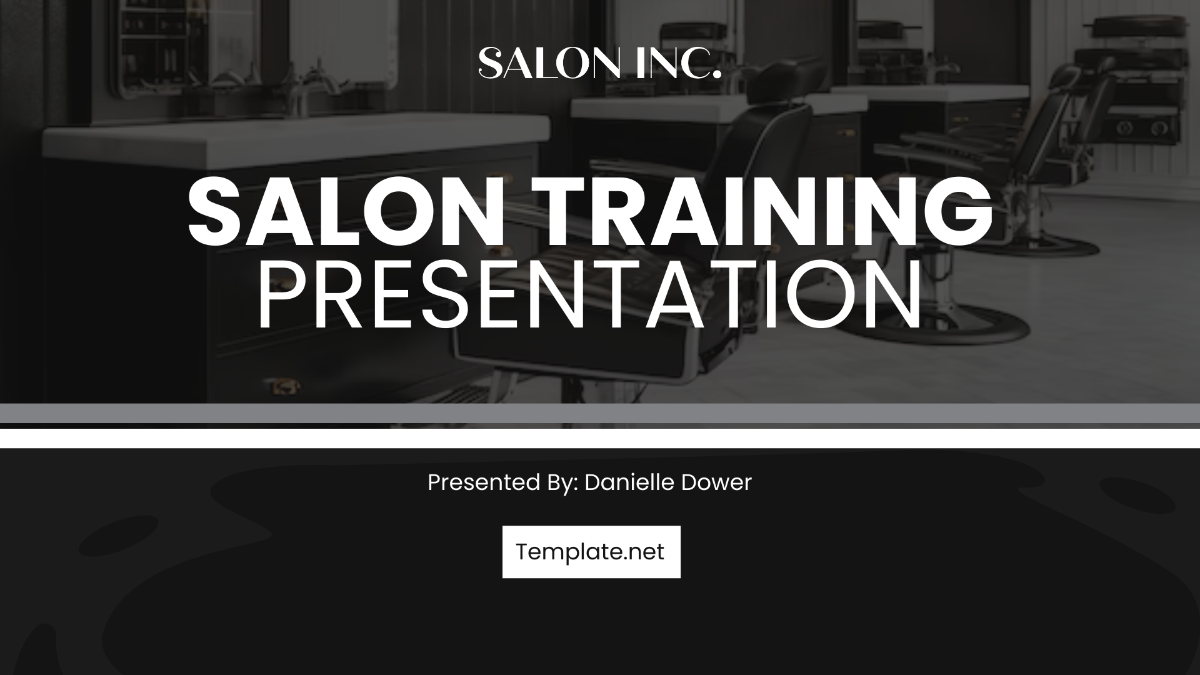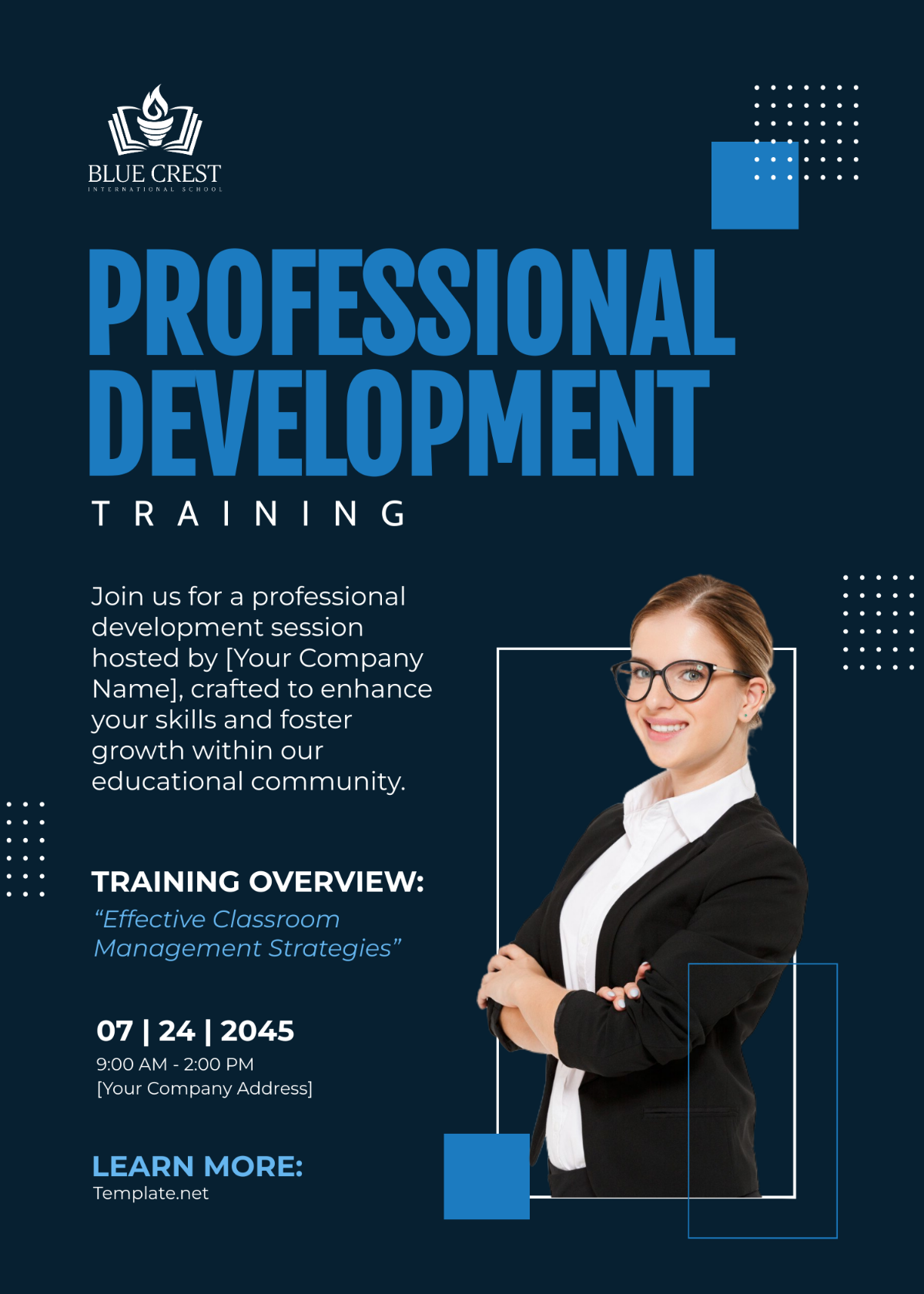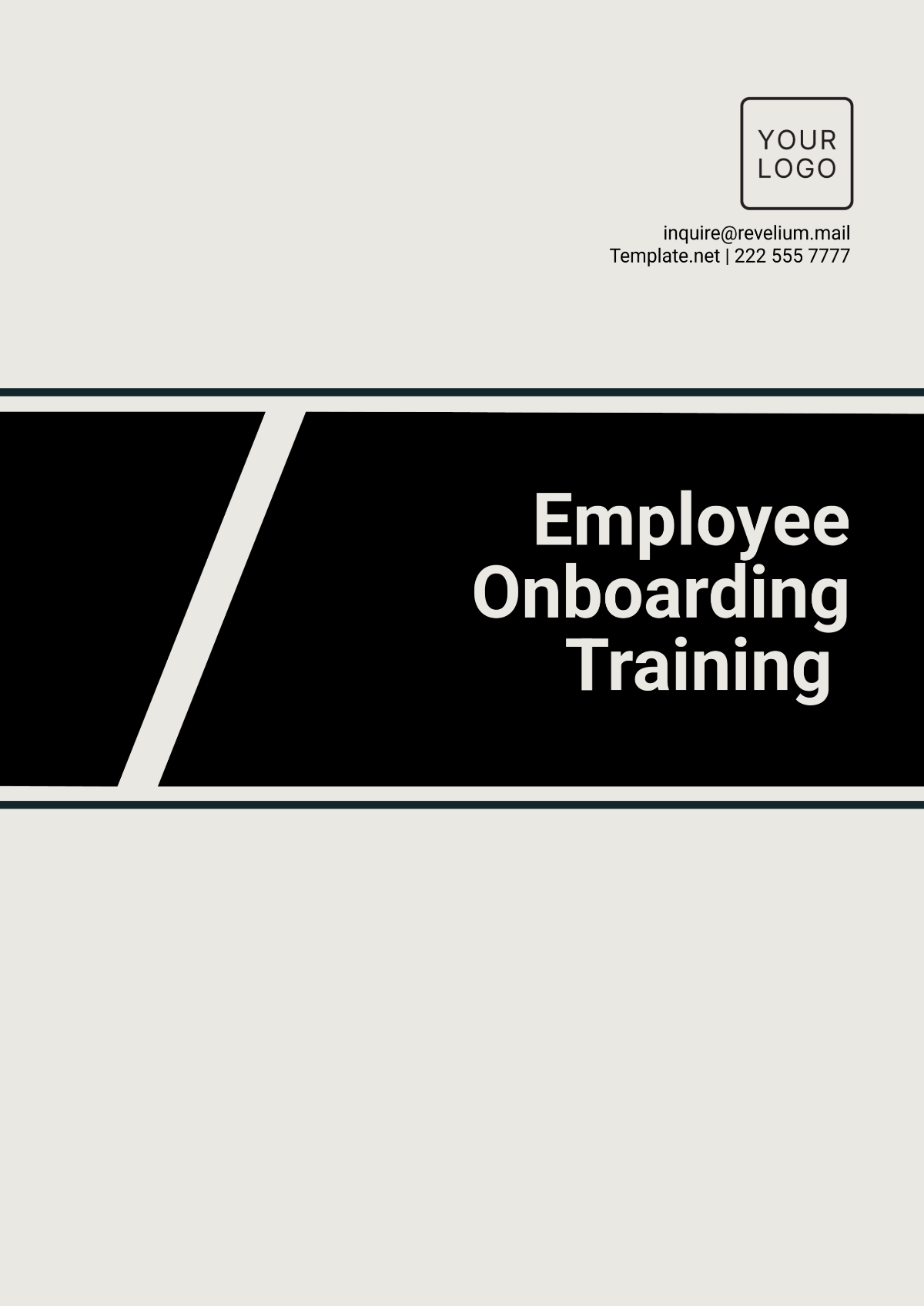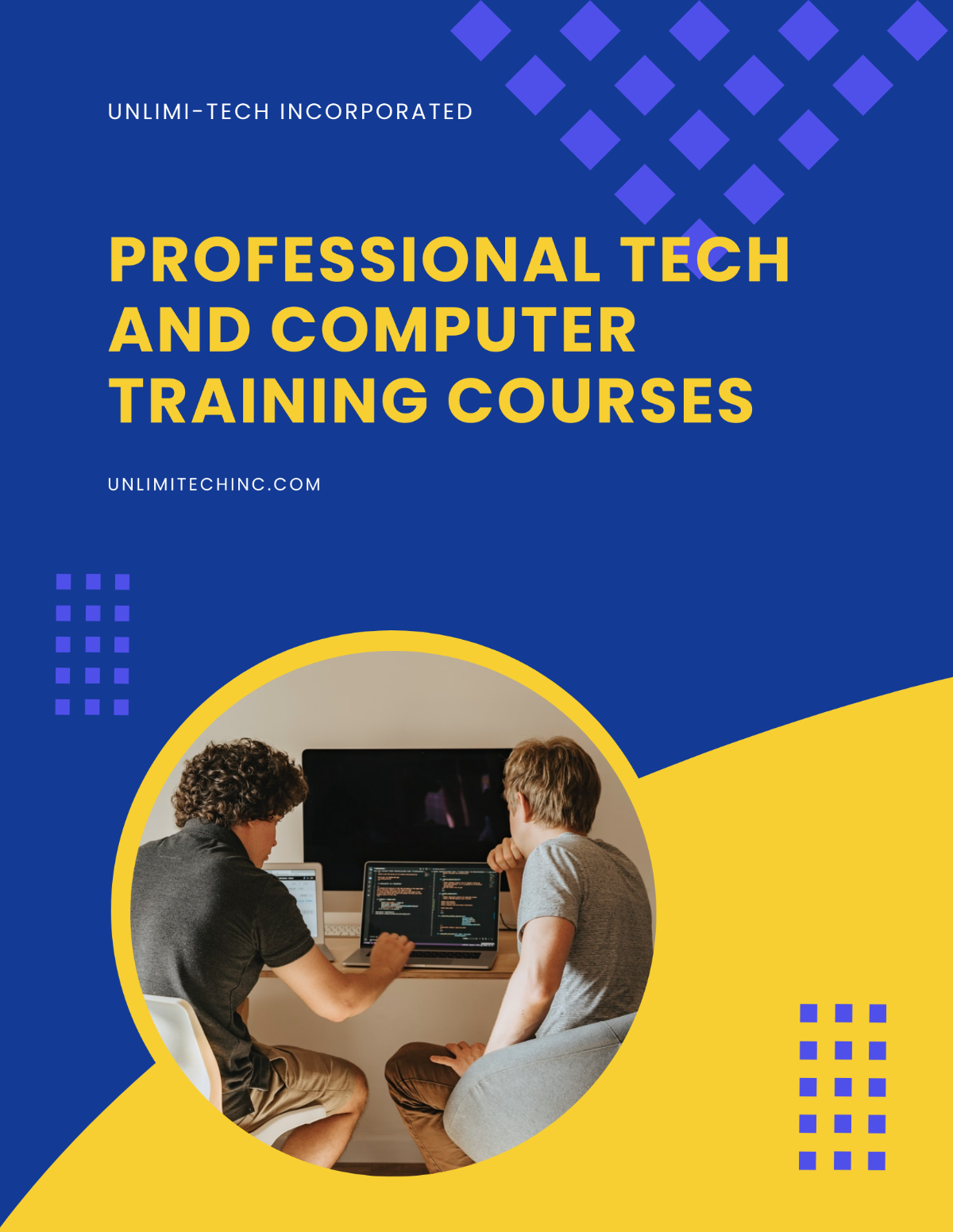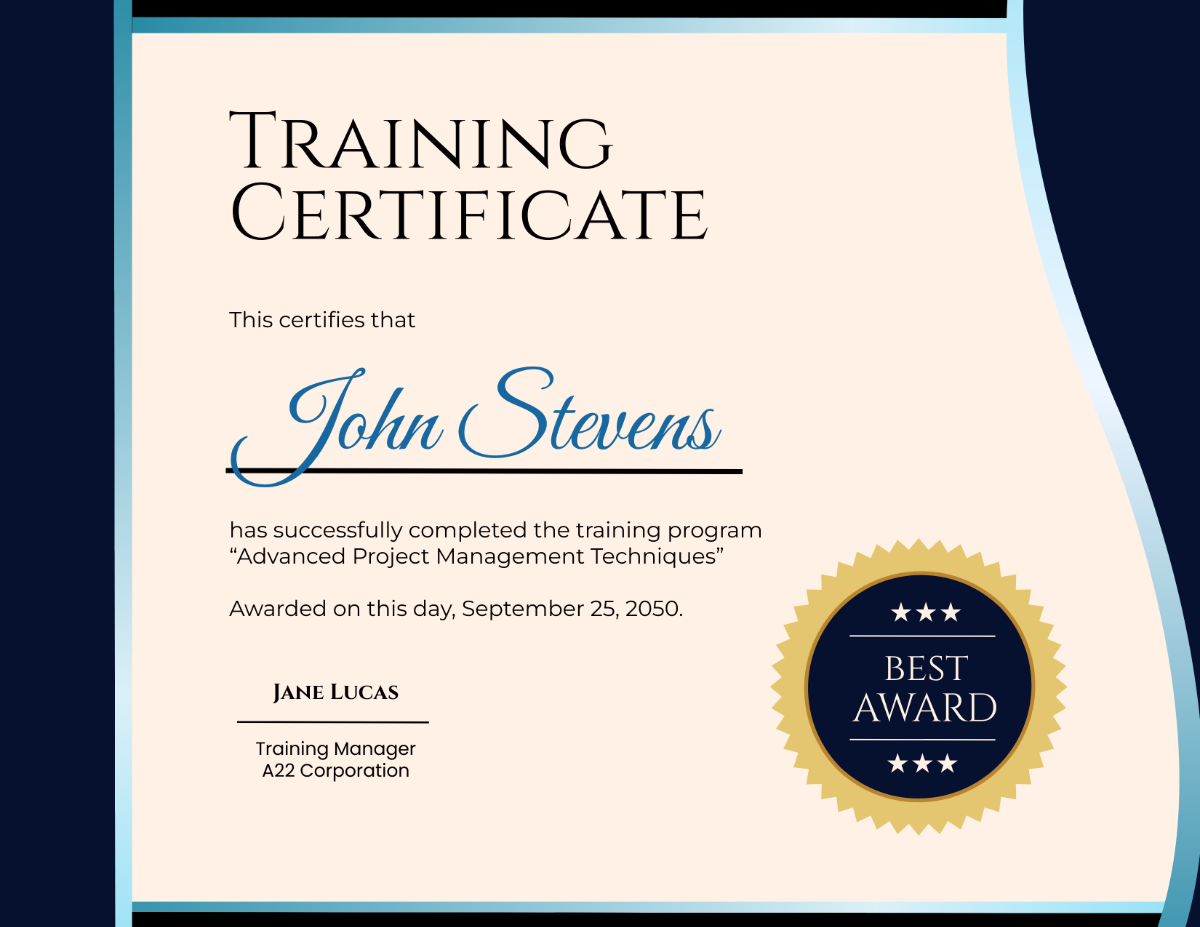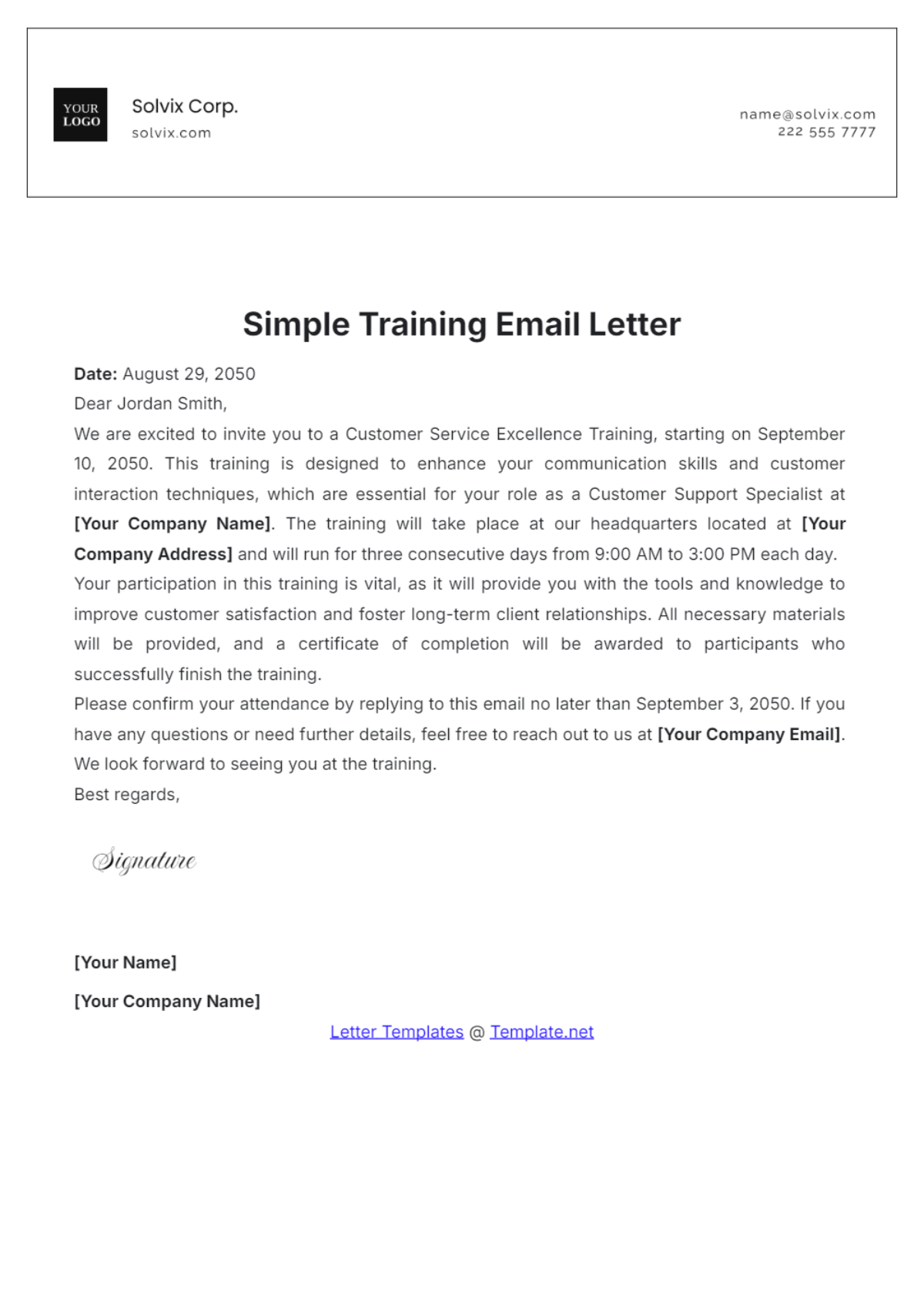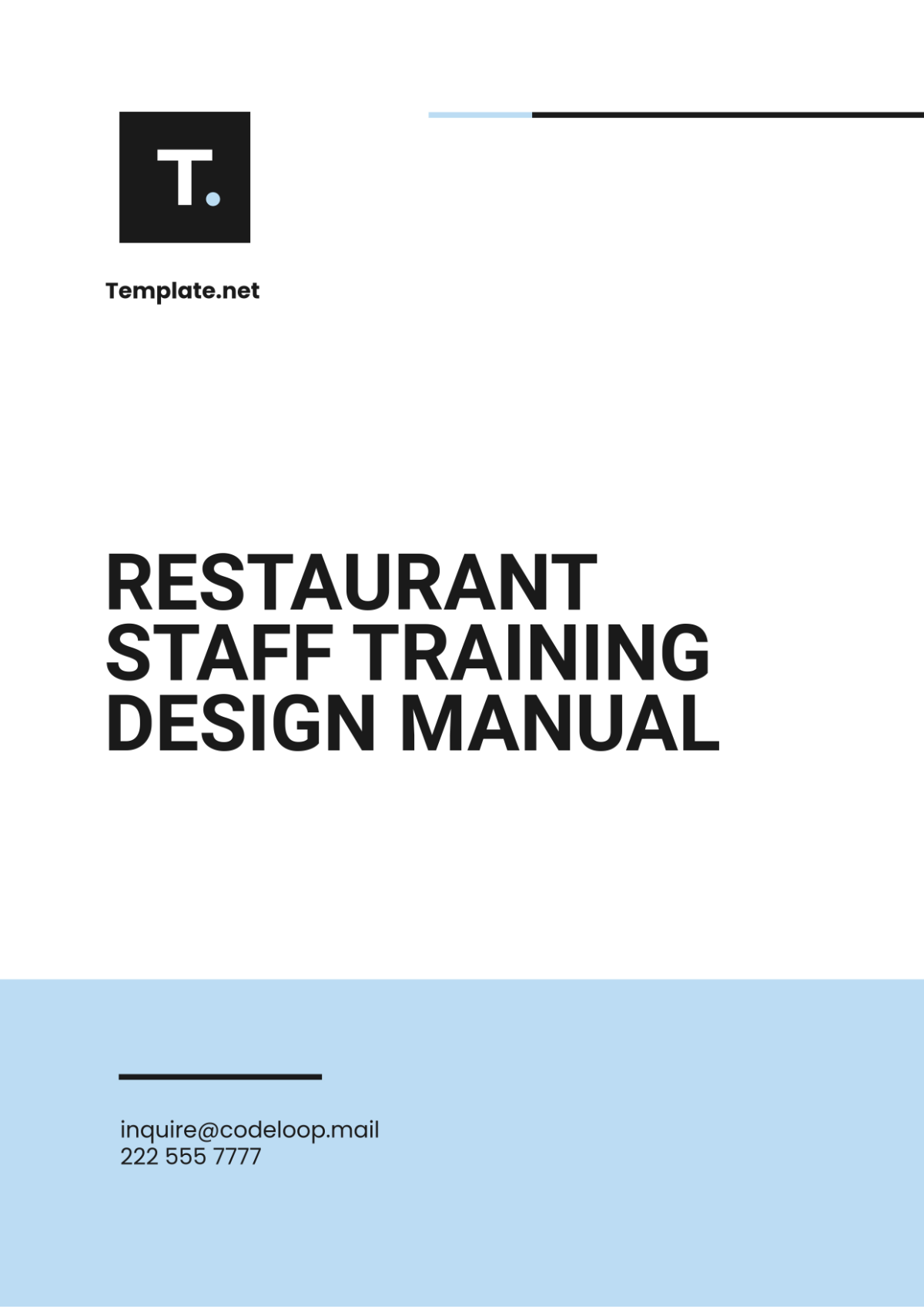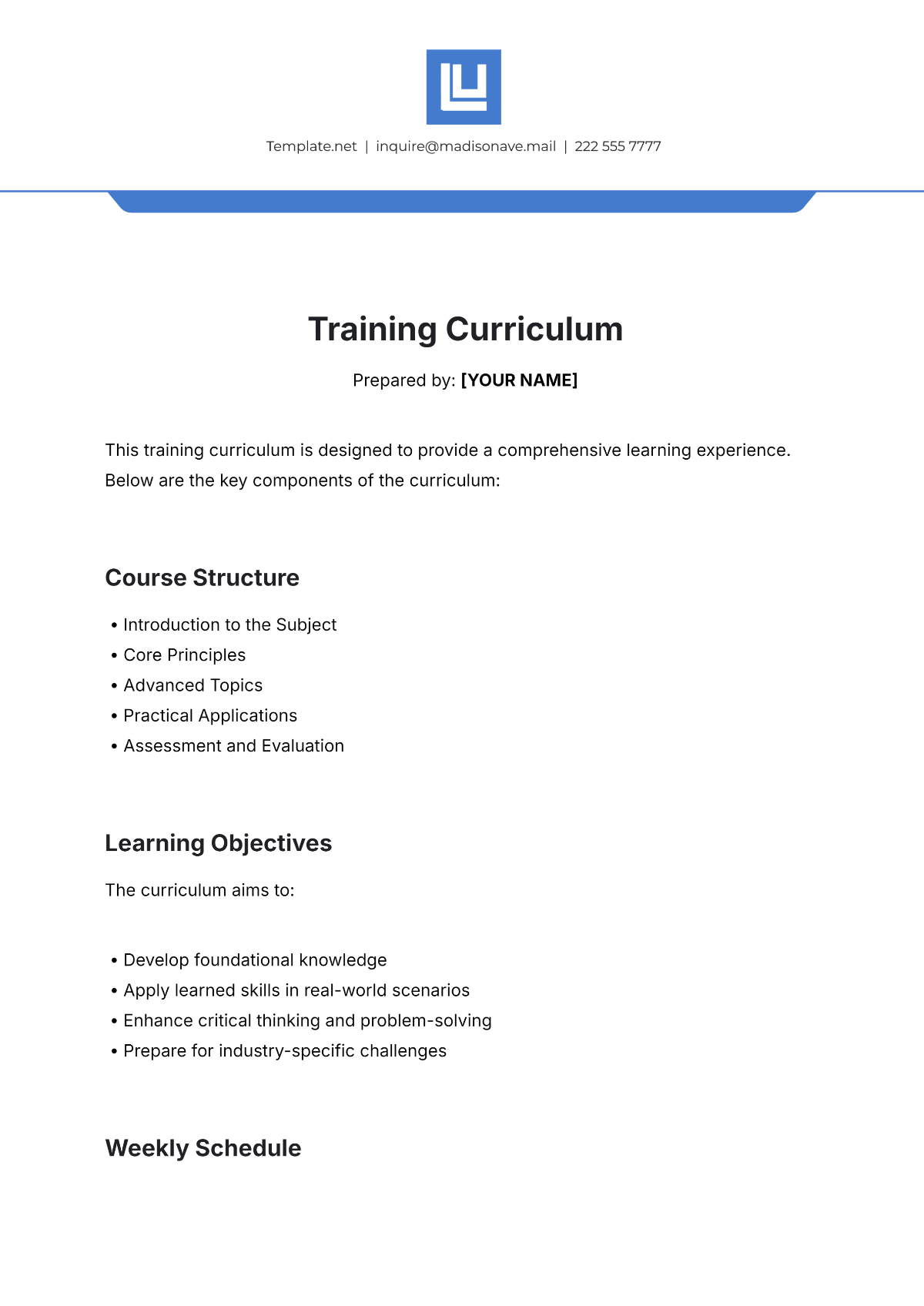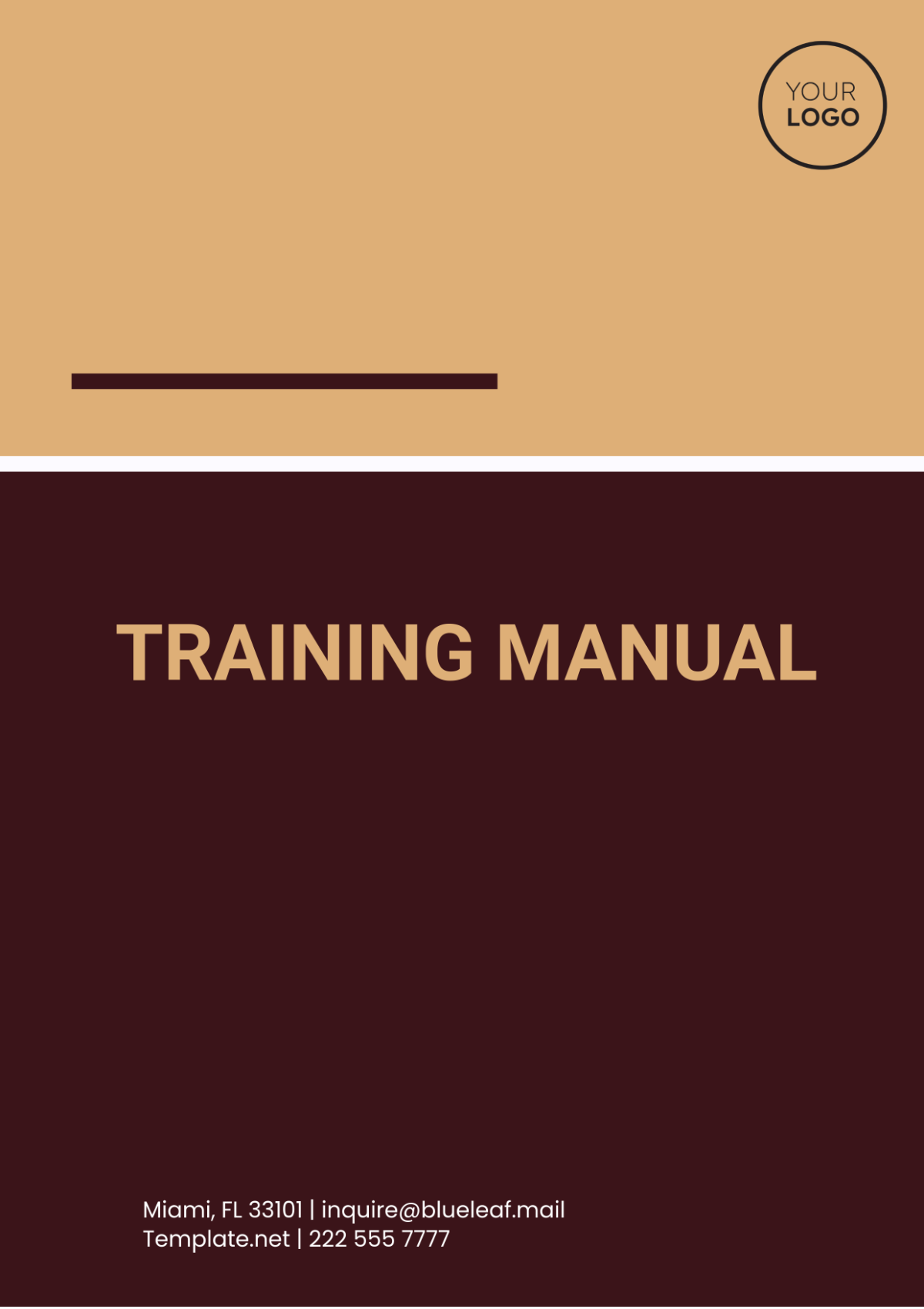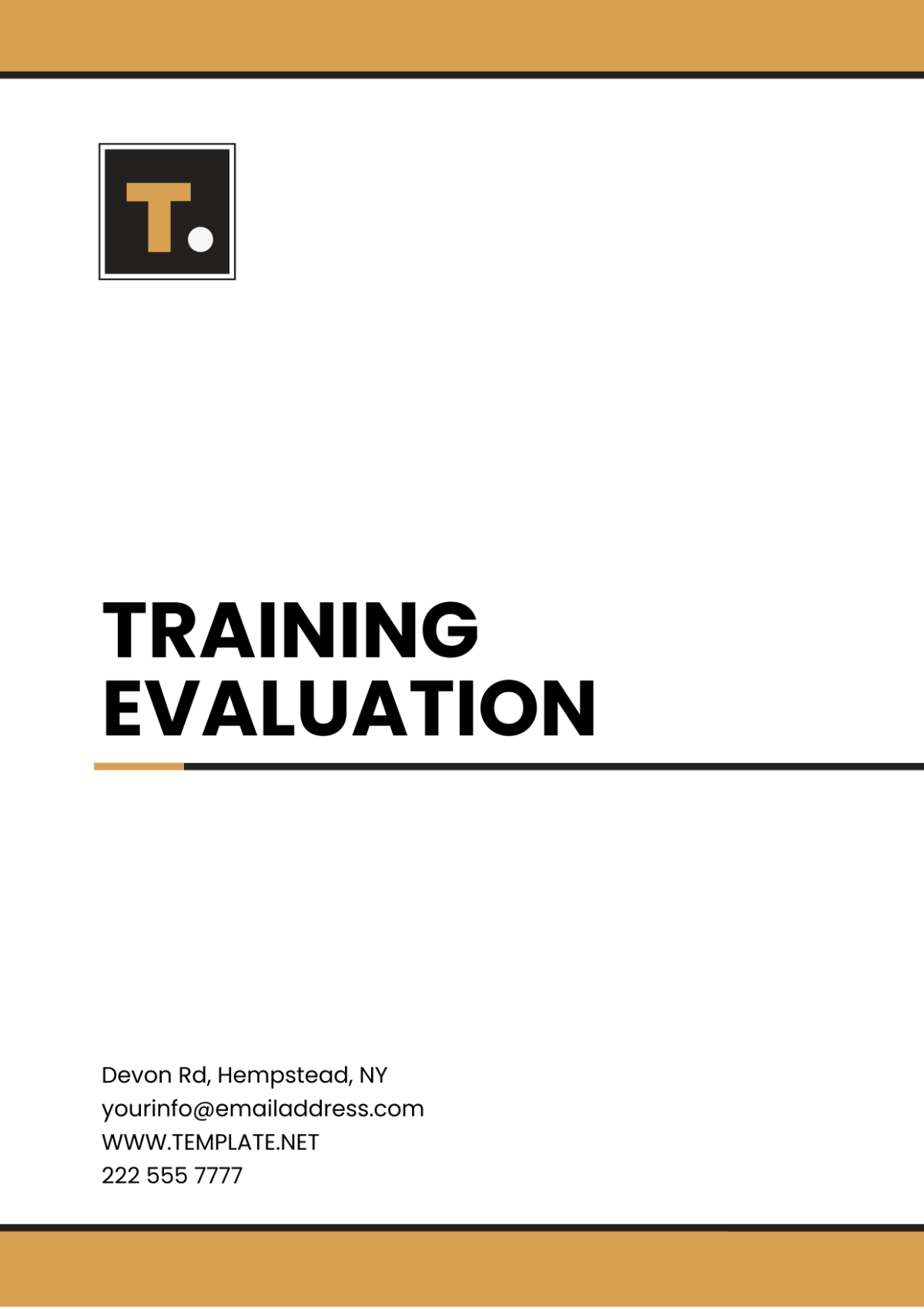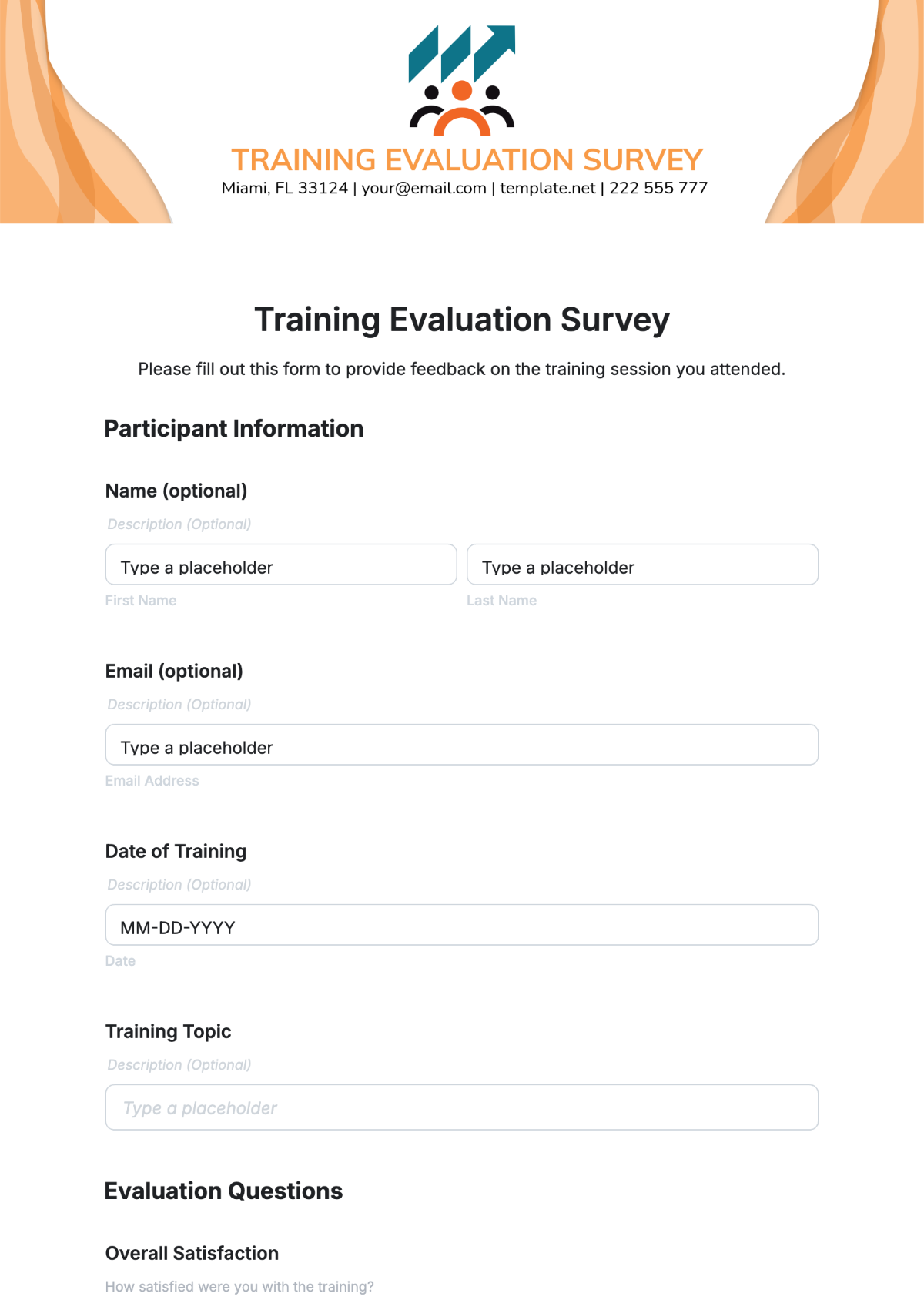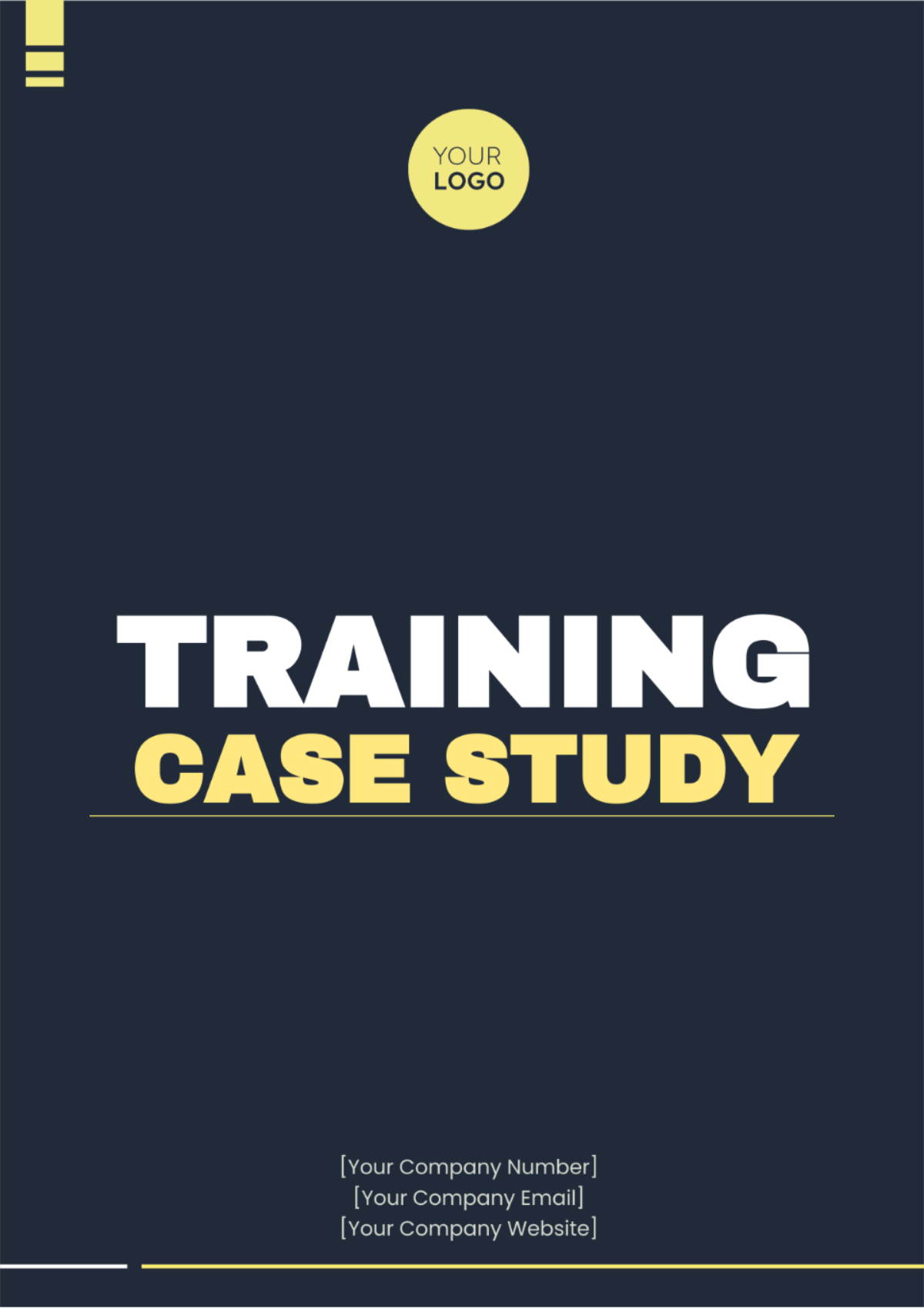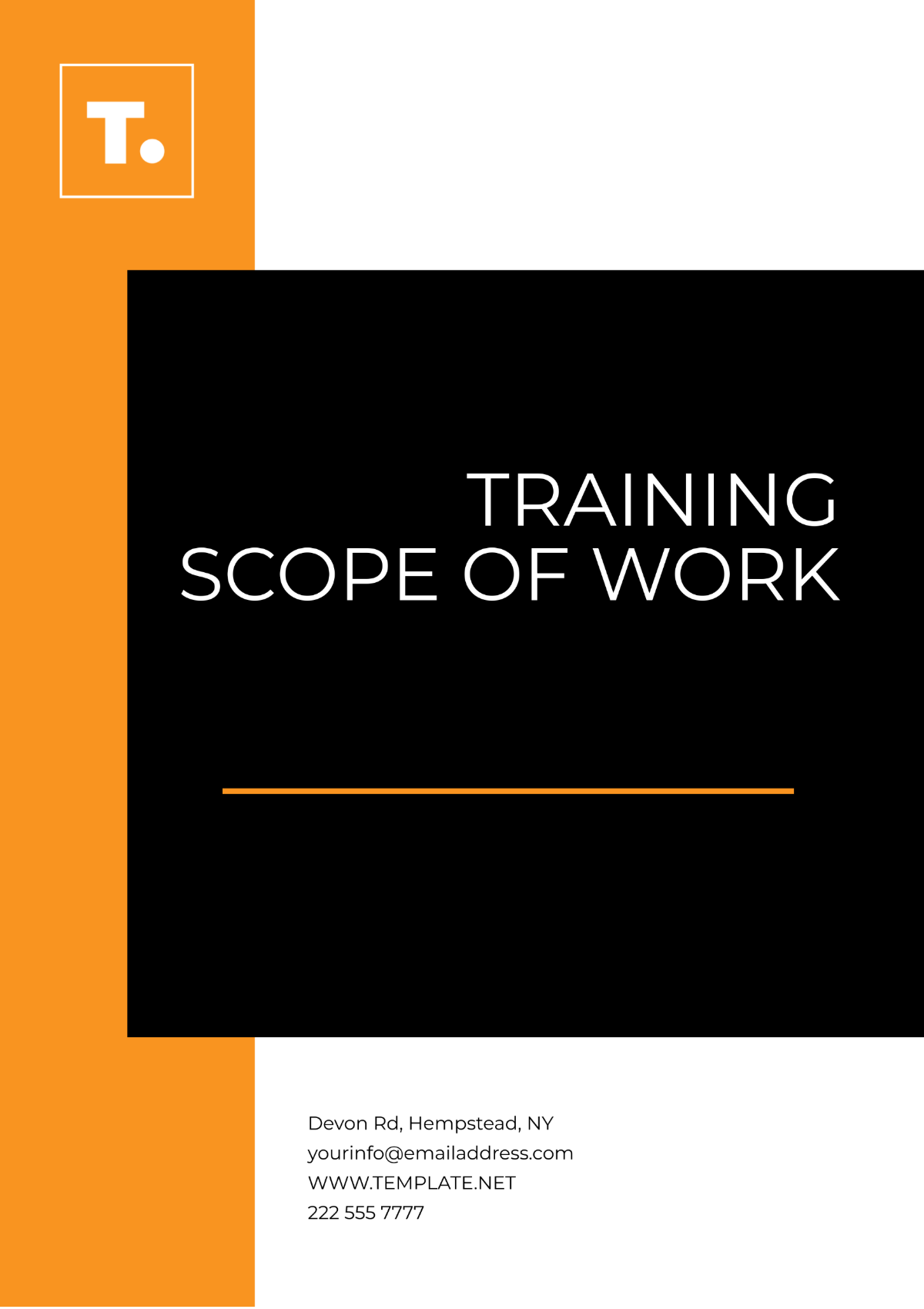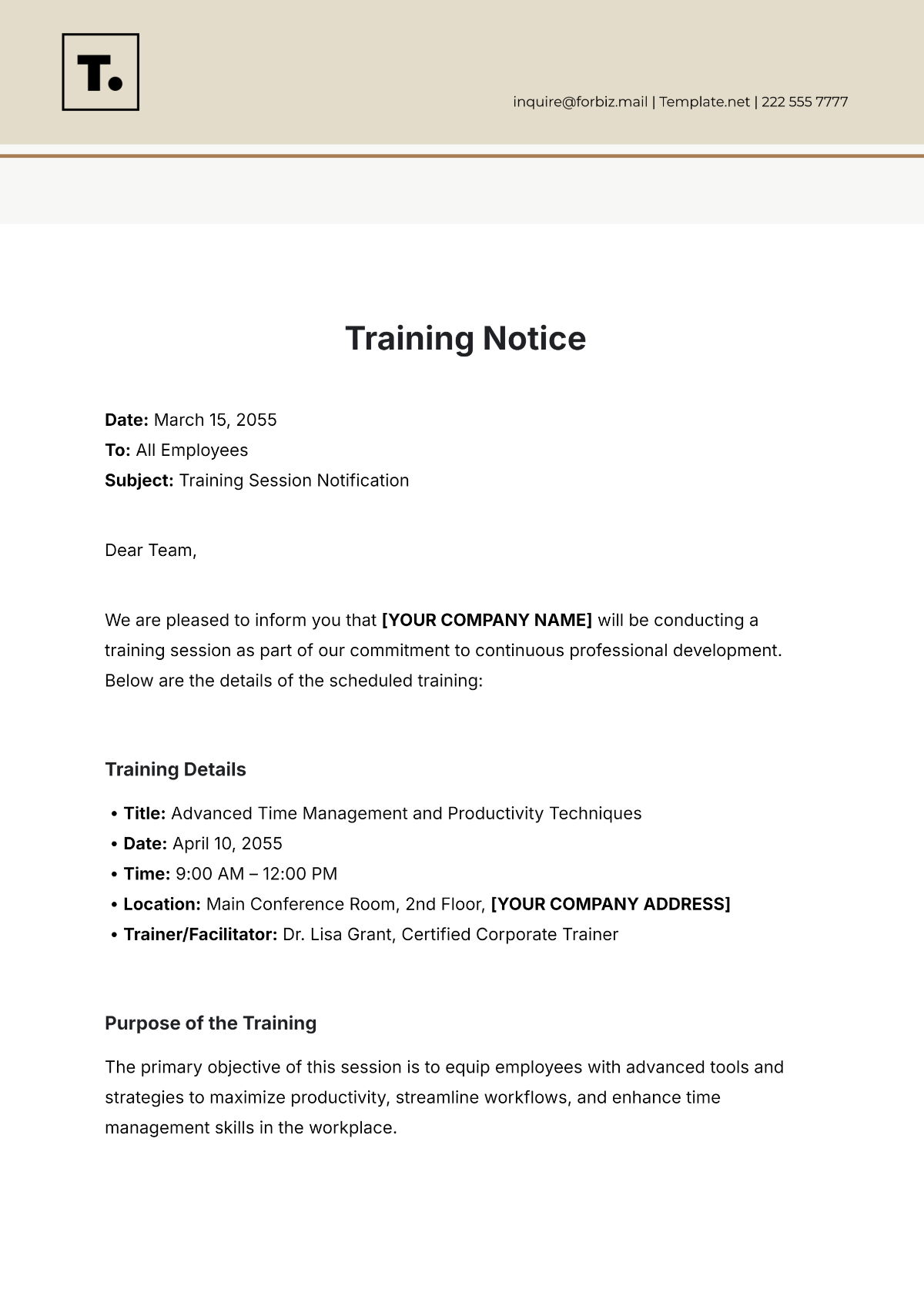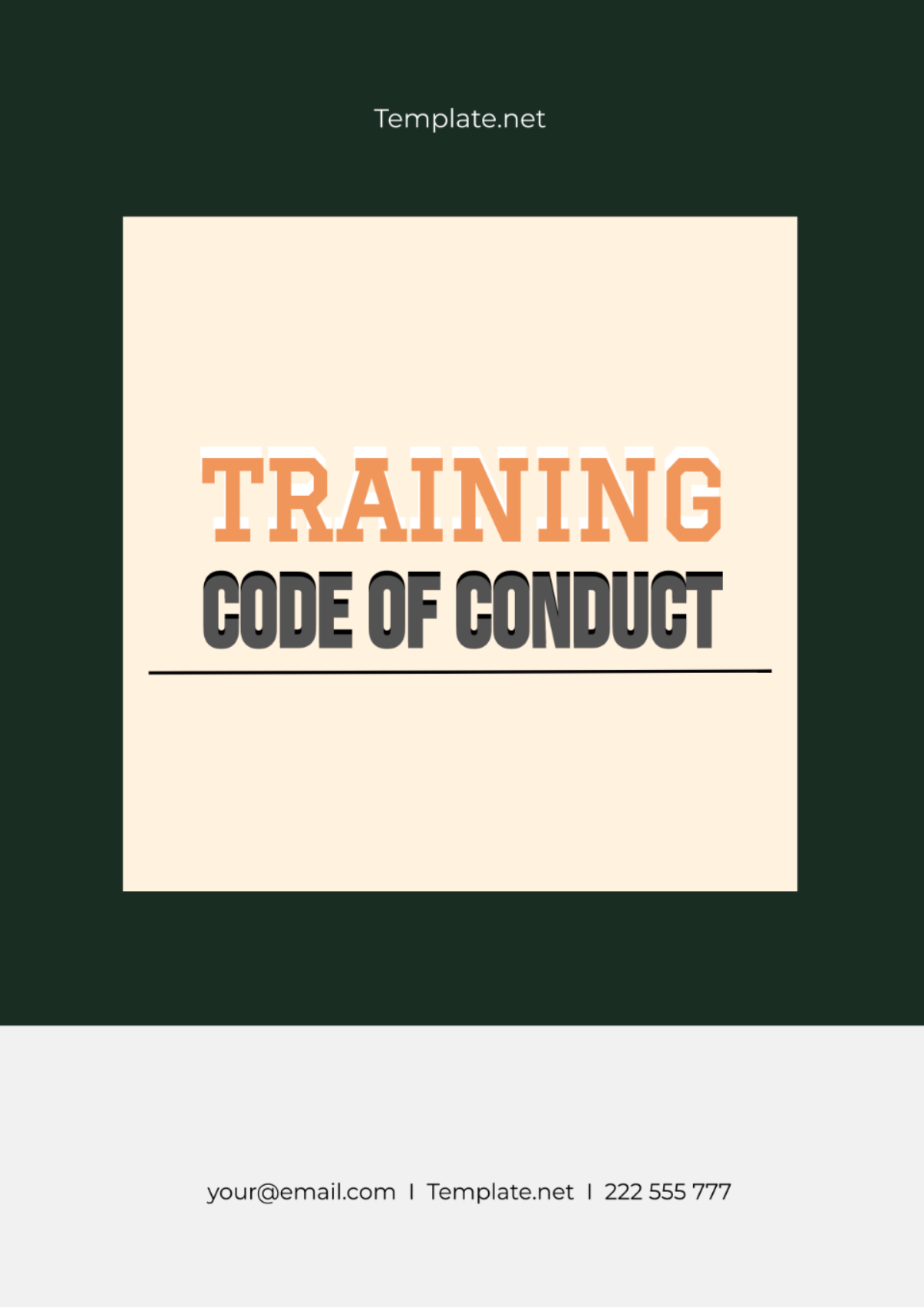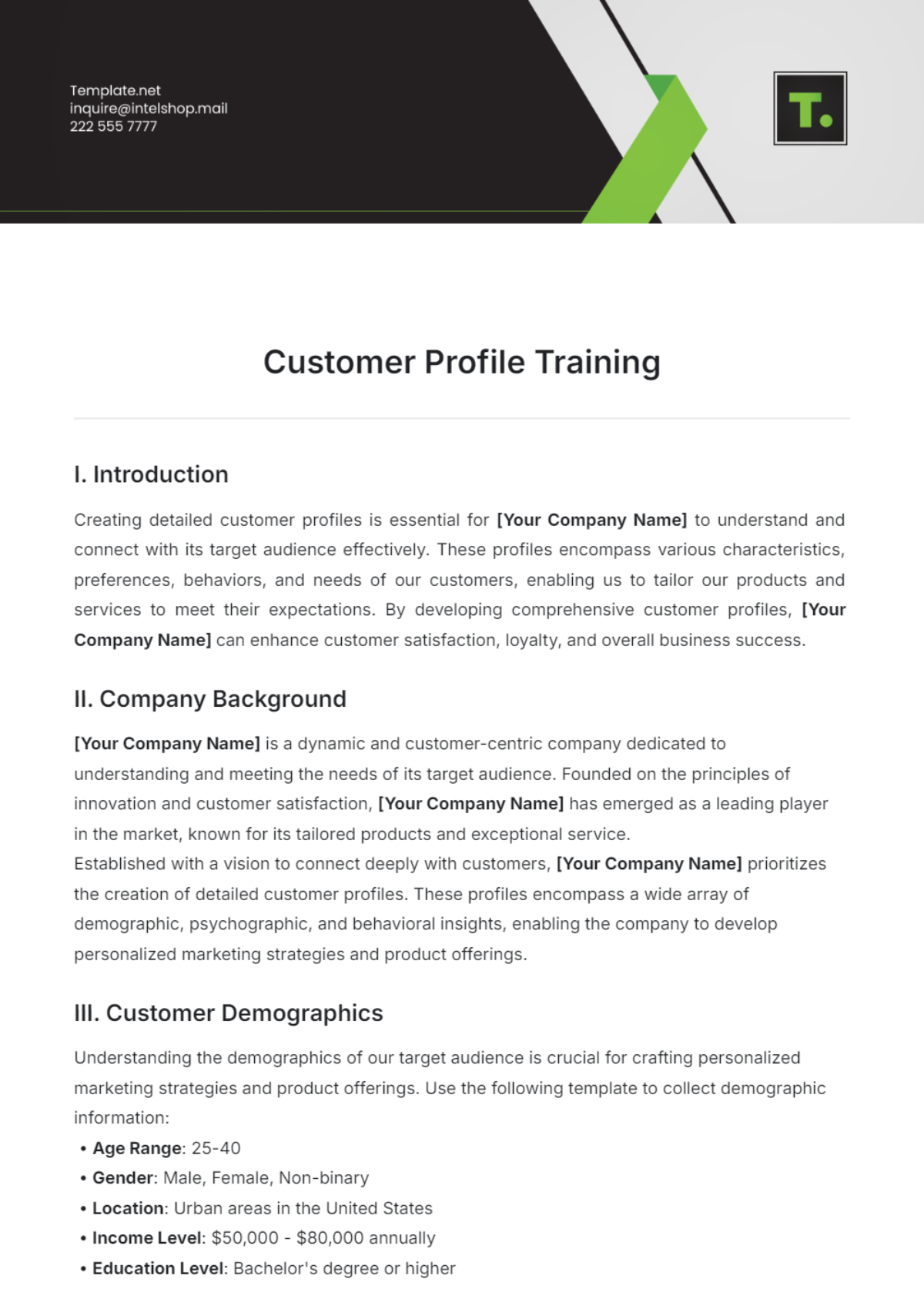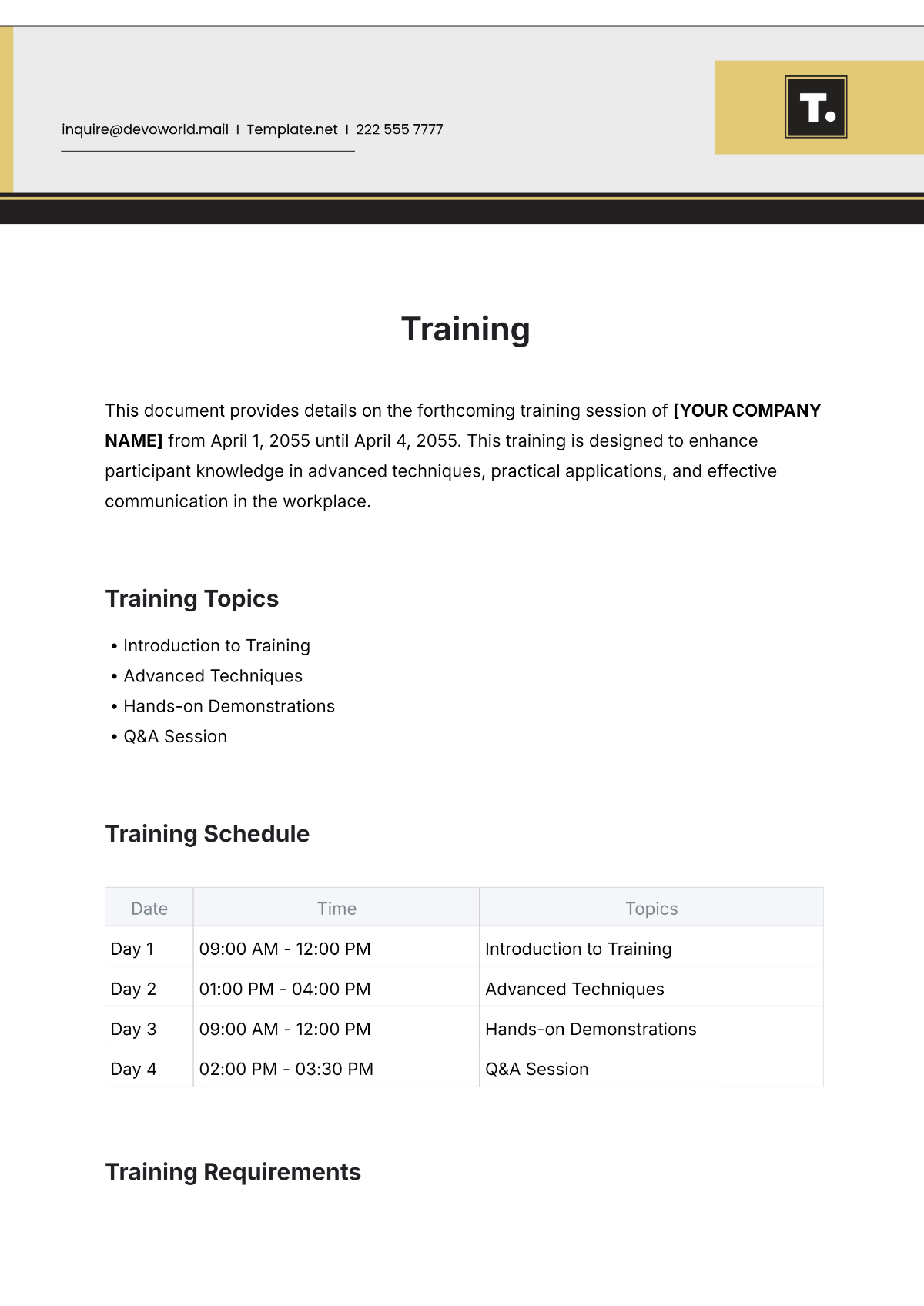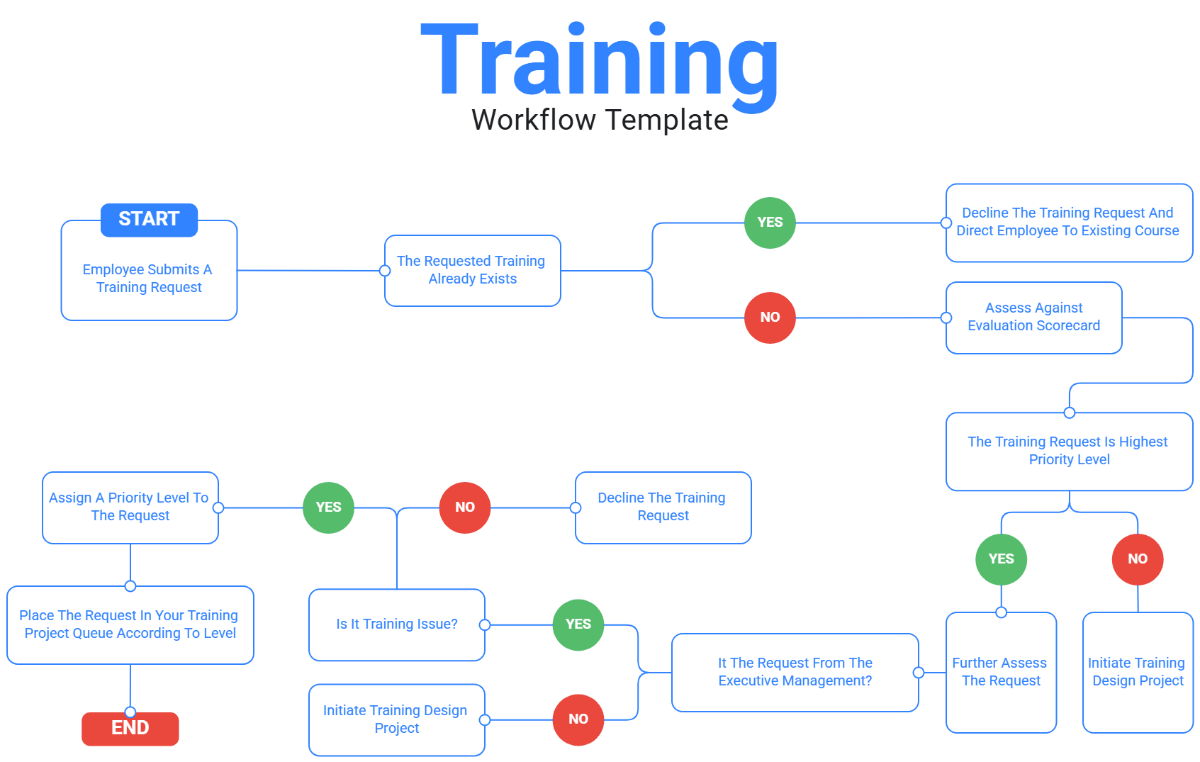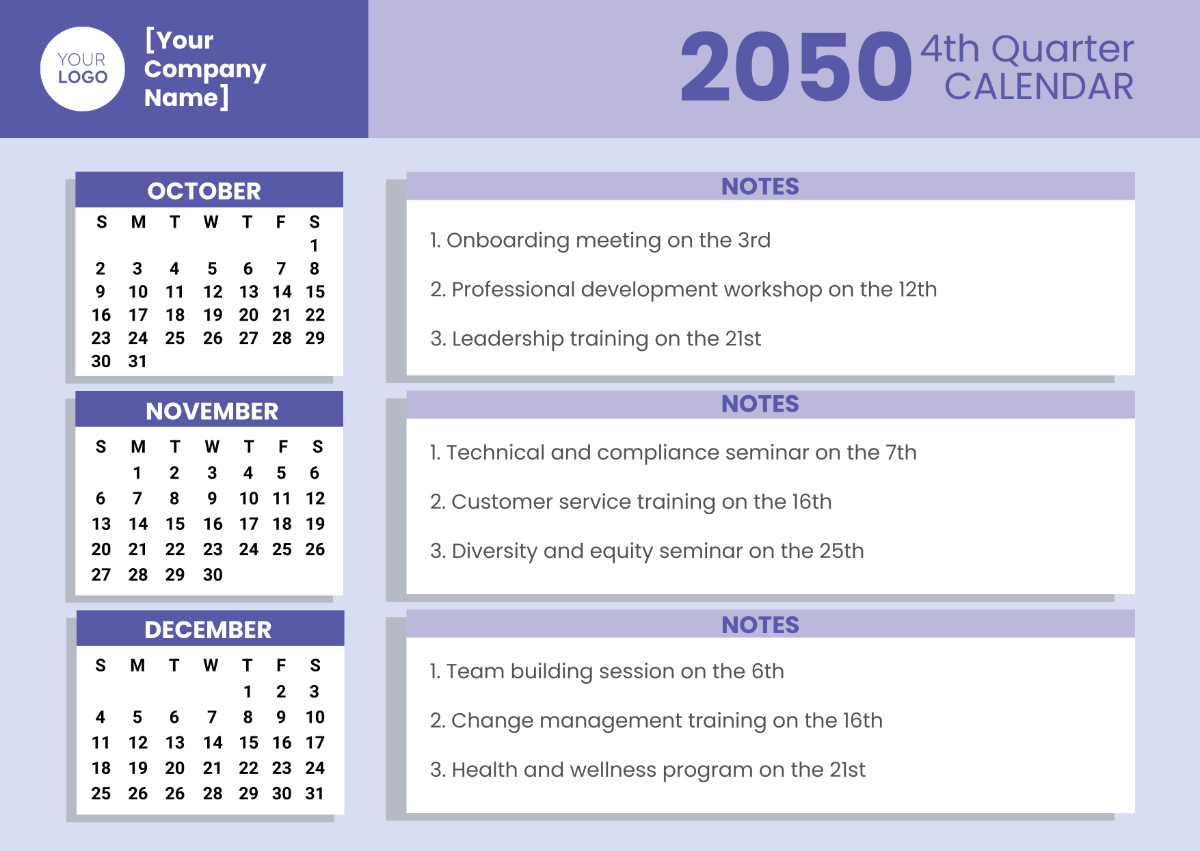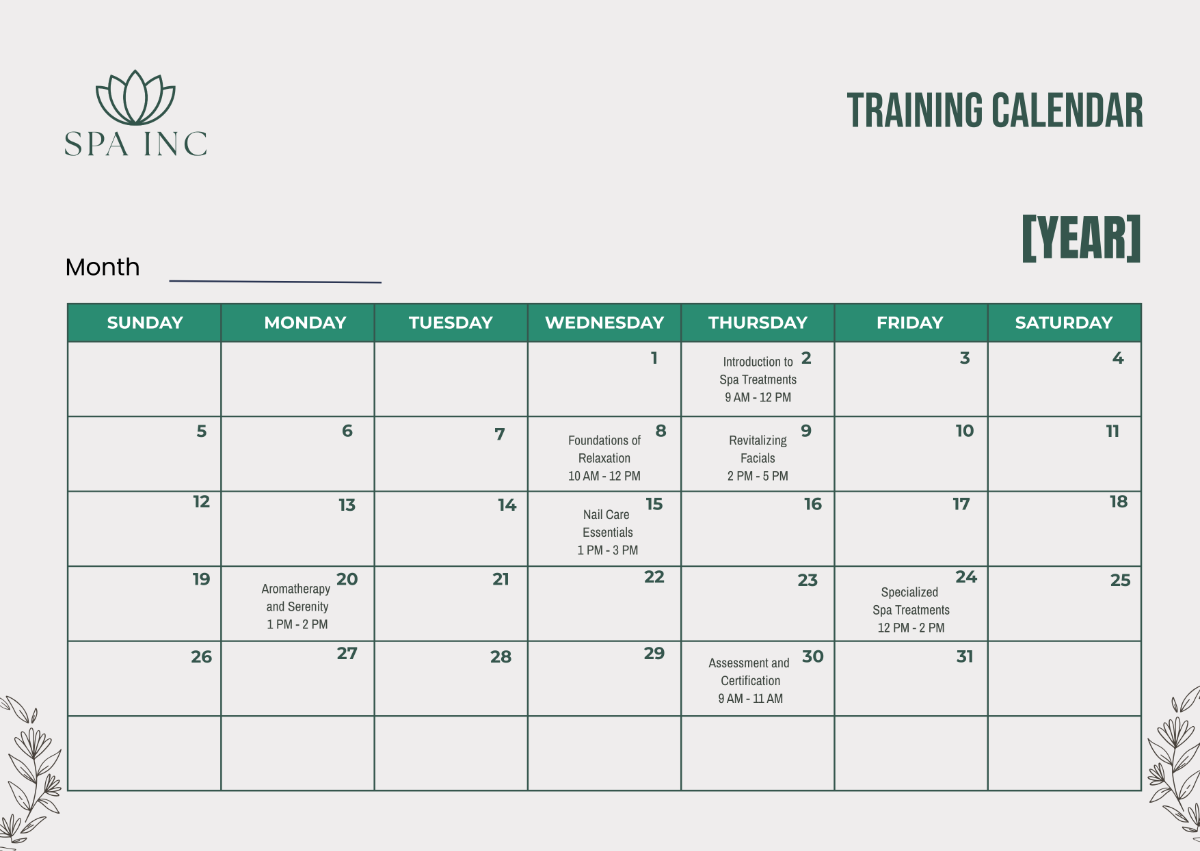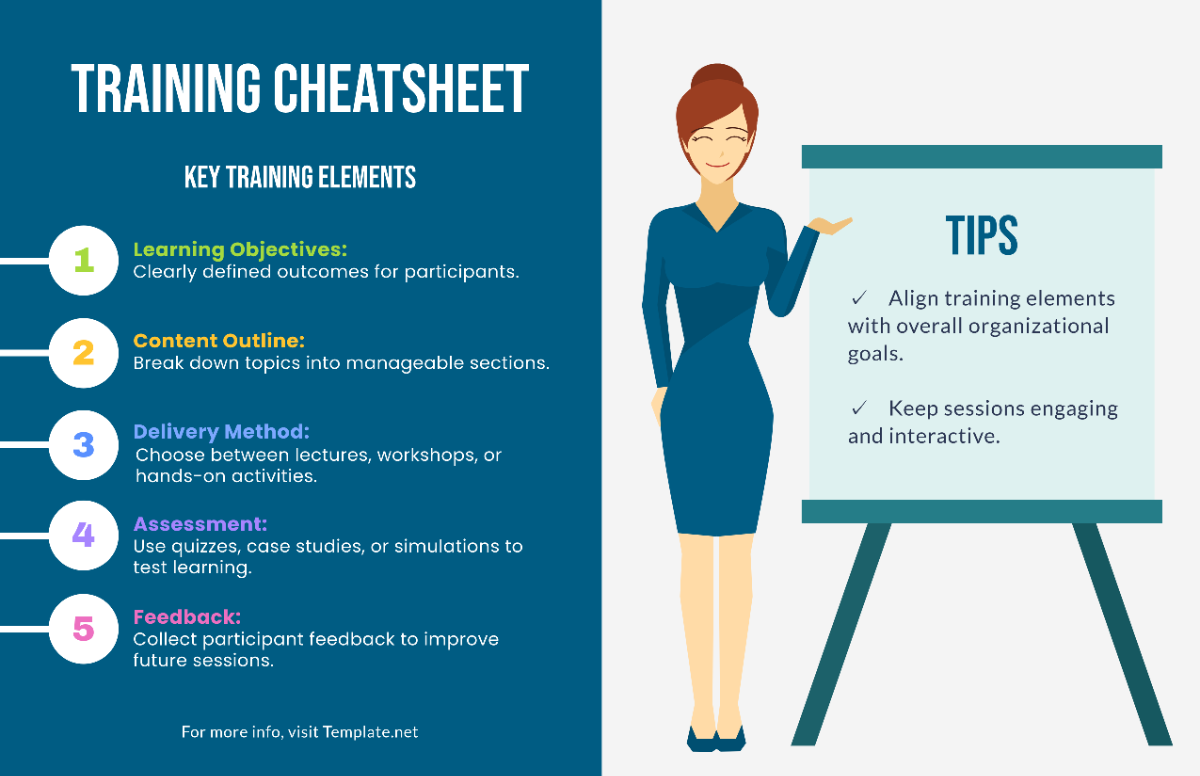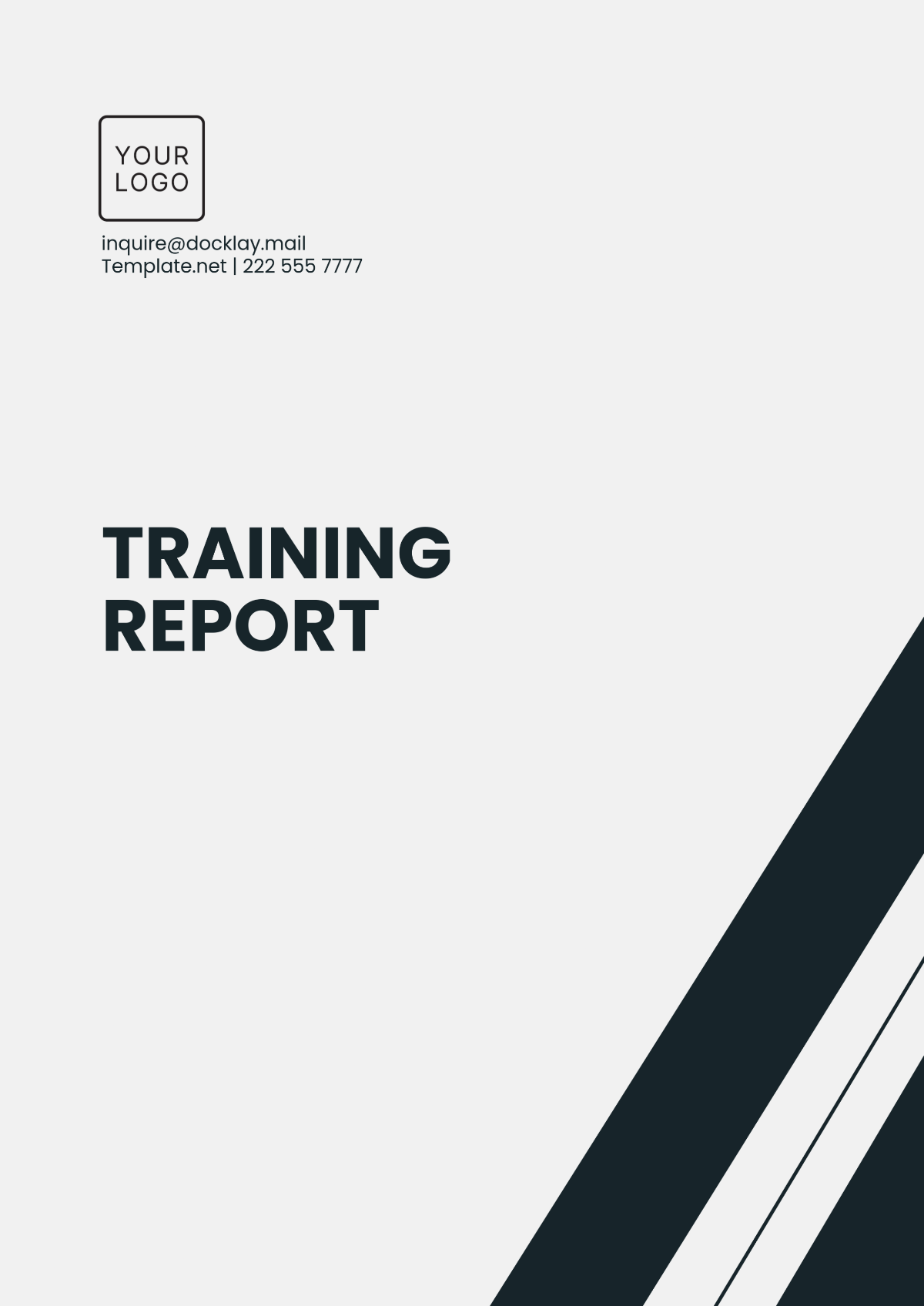Spa Training Strategy
I. Executive Summary
This Training Strategy of [Your Company Name] aims to elevate service standards, enhance staff skills, and ensure client satisfaction through comprehensive training programs. By investing in customer service, technical skills, health and safety, and wellness education, we plan to build a knowledgeable and motivated team that can deliver exceptional spa experiences. This strategy outlines a structured approach to staff training, incorporating diverse learning methods and continuous improvement.
Key data highlights our commitment to training with a planned budget allocation of $300,000 for 2055. This includes $100,000 for customer service training, $75,000 for technical skills training, $50,000 for health and safety training, and $75,000 for wellness education. Our goal is to improve service quality, increase client retention, and enhance operational efficiency through targeted training initiatives.
The strategy also emphasizes the importance of ongoing assessments and feedback mechanisms to ensure the effectiveness of our training programs. By regularly evaluating our training outcomes, we can make necessary adjustments and continuously improve our staff's skills and knowledge.
II. Training Needs Assessment
A. Identifying Training Needs
Understanding the specific training needs of our staff is crucial for developing effective programs. The following table outlines the key areas identified for training:
Training Area | Importance Level | Current Competency | Required Competency |
|---|---|---|---|
Customer Service | High | Medium | High |
Technical Skills | High | Low | High |
Health and Safety | Medium | Medium | High |
Wellness Education | High | Low | High |
Customer service is a high-priority area where we aim to enhance communication and problem-solving skills. Currently, our staff has a medium competency level, but our goal is to achieve a high level to improve client interactions and satisfaction.
Technical skills are essential for offering advanced spa treatments. Our staff currently has low competency in this area, which necessitates intensive training to reach the required high competency level. This will enable us to provide cutting-edge services and maintain a competitive edge.
Health and safety training is critical for ensuring a safe environment for both staff and clients. While our current competency is medium, we strive to achieve a high level to comply with regulations and enhance overall safety standards.
Wellness education is vital for promoting holistic wellness services. Our staff currently has low competency in this area, and we aim to elevate it to a high level through comprehensive training programs.
By addressing these training needs, we can ensure our staff is well-equipped to deliver high-quality services and meet client expectations. Regular assessments will help us monitor progress and make necessary adjustments to our training strategy.
B. Methods for Assessing Training Needs
Surveys and Questionnaires: Distribute surveys and questionnaires to gather feedback from staff about their perceived training needs and areas for improvement. This method allows us to collect a wide range of data and understand common training gaps.
Performance Reviews: Analyze performance reviews to identify areas where staff may need additional training. Performance reviews provide valuable insights into individual strengths and weaknesses, guiding targeted training efforts.
Client Feedback: Use client feedback to identify service areas that require improvement. Client feedback helps us understand how our services are perceived and pinpoint specific training needs to enhance client satisfaction.
Observation: Conduct direct observations of staff during service delivery to identify practical training needs. Observations allow us to see firsthand how staff apply their skills and where they may require further development.
Competency Assessments: Perform competency assessments to evaluate current skill levels and identify gaps. Competency assessments provide objective data on staff capabilities, helping us tailor training programs to address specific needs.
Assessing training needs through these methods will ensure our training programs are relevant and effective. By understanding the specific areas where our staff requires development, we can design targeted training initiatives that improve overall service quality and operational efficiency.
III. Training Programs
A. Customer Service Training
Investing in customer service training is essential for enhancing client satisfaction. The following chart and table outline the key components of our customer service training program:
Component | Cost |
|---|---|
Communication Skills | $40,000 |
Conflict Resolution | $30,000 |
Client Engagement | $20,000 |
Feedback Handling | $10,000 |
Total | $100,000 |
Communication skills training will focus on improving verbal and non-verbal communication techniques. By enhancing our staff's ability to communicate effectively, we can ensure clear and positive interactions with clients, leading to higher satisfaction levels.
Conflict resolution training will equip staff with the skills to manage and resolve client issues professionally. Effective conflict resolution is crucial for maintaining client trust and loyalty, even when challenges arise.
Client engagement training will emphasize techniques for building strong relationships with clients. Engaging clients through personalized interactions and attentiveness can significantly enhance their overall experience and encourage repeat visits.
Feedback handling training will teach staff how to effectively gather and respond to client feedback. By addressing feedback constructively, we can continuously improve our services and demonstrate our commitment to client satisfaction.
Customer service training will help our staff provide exceptional service, fostering positive client relationships and enhancing our reputation. By investing in these components, we can create a welcoming and client-focused spa environment.
B. Technical Skills Training
Enhancing technical skills is crucial for providing advanced spa treatments. The following table outlines our technical skills training program:
Component | Cost |
|---|---|
Advanced Massage Techniques | $30,000 |
Skincare Treatments | $25,000 |
Aromatherapy | $10,000 |
Equipment Handling | $10,000 |
Total | $75,000 |
Advanced massage techniques training will cover various specialized massage styles and methods. This training will enable our staff to offer a wider range of services and meet diverse client needs.
Skincare treatments training will focus on the latest skincare procedures and products. By staying updated on skincare advancements, our staff can provide effective treatments that address specific skin concerns and deliver visible results.
Aromatherapy training will educate staff on the therapeutic use of essential oils. Understanding aromatherapy principles and techniques will enhance our holistic wellness services and promote relaxation and well-being.
Equipment handling training will ensure staff are proficient in using spa equipment safely and effectively. Proper equipment handling is crucial for delivering high-quality treatments and preventing injuries.
Technical skills training will enable our staff to offer cutting-edge treatments and maintain a competitive edge. By continuously updating their skills, we can ensure our services are of the highest quality and meet the evolving needs of our clients.
C. Health and Safety Training
Health and safety training is essential for creating a safe spa environment. The following table outlines our health and safety training program:
Component | Cost |
|---|---|
Hygiene Practices | $20,000 |
Emergency Procedures | $15,000 |
Safe Equipment Use | $10,000 |
Infection Control | $5,000 |
Total | $50,000 |
Hygiene practices training will focus on maintaining high standards of cleanliness and sanitation. Proper hygiene practices are critical for preventing the spread of infections and ensuring client safety.
Emergency procedures training will prepare staff to respond effectively to emergencies. Knowing how to handle various emergency situations will help protect the safety and well-being of both clients and staff.
Safe equipment use training will educate staff on the correct operation and maintenance of spa equipment. Proper use of equipment is essential for preventing accidents and injuries.
Infection control training will cover measures to prevent and control infections. By implementing strict infection control protocols, we can create a safe environment for clients and staff.
Health and safety training will ensure compliance with regulations and enhance the overall safety of our spa. By prioritizing these components, we can protect the well-being of everyone in our facilities.
D. Wellness Education
Wellness education will enhance our service offerings and client experience. The following table outlines our wellness education program:
Component | Cost |
|---|---|
Nutrition and Diet | $30,000 |
Stress Management | $20,000 |
Holistic Therapies | $15,000 |
Mindfulness and Meditation | $10,000 |
Total | $75,000 |
Nutrition and diet training will educate staff on the principles of healthy eating. By understanding nutrition, our staff can offer informed advice to clients and promote overall wellness.
Stress management training will provide techniques for managing stress effectively. Teaching staff stress management strategies will enhance their well-being and enable them to offer better advice to clients.
Holistic therapies training will cover various holistic wellness practices. By incorporating holistic therapies into our services, we can provide a comprehensive wellness experience that addresses the mind, body, and spirit.
Mindfulness and meditation training will teach staff mindfulness techniques. Practicing mindfulness can improve staff focus and calmness, allowing them to deliver a more relaxed and attentive service to clients.
Wellness education will enhance our staff's knowledge and enable them to provide a broader range of services. By promoting holistic wellness, we can improve client satisfaction and establish our spa as a leader in the wellness industry.
IV. Training Methods
A. In-House Training
In-house training allows us to customize programs to meet our specific needs. Key benefits include:
Customized Content: Develop training content tailored to our spa's unique services and standards. Customization ensures the training is relevant and directly applicable to our staff's daily tasks.
Cost-Effective: Utilize internal resources and trainers to deliver training, reducing costs compared to external programs. In-house training can be more economical and flexible, allowing us to allocate funds to other areas.
Consistent Training: Ensure all staff receive the same training, promoting consistency in service delivery. Consistent training helps maintain high standards across all spa locations and services.
Immediate Feedback: Provide real-time feedback and support to staff during training sessions. Immediate feedback helps staff quickly improve their skills and apply what they have learned.
Team Building: Foster a sense of teamwork and collaboration through group training activities. Team-building exercises enhance communication and cooperation among staff, improving overall performance.
In-house training offers numerous advantages, including customization, cost savings, and consistency. By leveraging our internal resources, we can deliver effective and relevant training programs that meet our specific needs.
B. External Training
External training provides access to specialized expertise and resources. Key benefits include:
Expert Instructors: Utilize the knowledge and experience of industry experts to deliver high-quality training. Expert instructors bring valuable insights and advanced techniques to our staff.
New Perspectives: Introduce new ideas and approaches that may not be available internally. External training exposes staff to innovative practices and industry trends, broadening their skill set.
Accreditation: Obtain certifications and accreditation from recognized training providers. Accredited training enhances staff credentials and demonstrates our commitment to professional development.
Networking Opportunities: Connect with professionals from other organizations, fostering networking and collaboration. Networking can lead to new partnerships and opportunities for growth.
External training offers the advantage of expert instruction, new perspectives, and accreditation. By incorporating external training programs, we can enhance our staff's skills and stay ahead of industry developments.
V. Training Schedule
A. Annual Training Calendar
An organized training schedule ensures timely delivery of programs. The following table outlines our annual training calendar for 2055:
Month | Training Program | Duration |
|---|---|---|
January | Customer Service | 2 weeks |
March | Technical Skills | 3 weeks |
May | Health and Safety | 1 week |
July | Wellness Education | 2 weeks |
September | Refresher Courses | 1 week |
November | Advanced Training Workshops | 1 week |
Customer service training will kick off in January with a two-week intensive program. This timing allows us to start the year with a focus on enhancing client interactions and satisfaction.
In March, we will conduct a three-week technical skills training program. This extended duration ensures thorough coverage of advanced techniques and hands-on practice for our staff.
Health and safety training will take place in May, with a one-week program designed to update staff on the latest protocols and safety measures.
July will be dedicated to wellness education, with a two-week program focusing on holistic wellness practices. This mid-year training will refresh and expand our staff's knowledge.
Refresher courses in September will provide an opportunity to review and reinforce key skills and knowledge. This one-week program ensures staff remain proficient in their roles.
Finally, in November, we will offer advanced training workshops. These one-week sessions will focus on the latest industry trends and advanced techniques, keeping our staff at the forefront of spa services.
B. Onboarding Training
Onboarding training is essential for new staff to integrate smoothly into our operations. Key components include:
Orientation: Introduce new staff to our spa's culture, values, and policies. Orientation helps new hires understand our expectations and feel welcomed into the team.
Job-Specific Training: Provide training tailored to the specific roles and responsibilities of new staff. Job-specific training ensures new hires are well-prepared for their positions and can perform their duties effectively.
Mentorship: Pair new staff with experienced mentors who can offer guidance and support. Mentorship programs help new hires acclimate quickly and build strong relationships within the team.
Performance Evaluations: Conduct regular performance evaluations during the onboarding period to track progress and identify areas for improvement. Evaluations provide feedback and help new hires develop their skills.
Onboarding training is crucial for setting new staff up for success. By providing comprehensive orientation, job-specific training, mentorship, and performance evaluations, we can ensure new hires integrate smoothly and perform effectively.
VI. Training Resources
A. Training Materials
High-quality training materials are essential for effective learning. The following chart and table outline our key training materials:
Material | Description | Cost |
|---|---|---|
Training Manuals | Comprehensive guides covering training content | $20,000 |
Online Learning Platform | Digital platform for accessing training modules | $30,000 |
Training Videos | Visual aids demonstrating techniques and procedures | $15,000 |
Simulation Tools | Hands-on tools for practicing skills | $10,000 |
Total | $75,000 |
Training manuals will provide detailed information on training content, serving as a valuable reference for staff. These comprehensive guides will cover all aspects of our training programs and ensure consistent learning.
An online learning platform will offer a convenient way for staff to access training modules at their own pace. This digital platform will include interactive content and assessments to enhance the learning experience.
Training videos will demonstrate techniques and procedures, providing visual aids to complement written materials. Videos are an effective way to show practical skills and ensure staff understand the correct methods.
Simulation tools will allow staff to practice their skills in a controlled environment. Hands-on practice is essential for mastering techniques and building confidence.
High-quality training materials will support effective learning and ensure our training programs are comprehensive and engaging. By investing in these resources, we can enhance the overall training experience for our staff.
B. Training Facilities
Having dedicated training facilities is important for creating a conducive learning environment. Key features include:
Training Rooms: Designated spaces equipped with necessary tools and technology for conducting training sessions. Training rooms provide a focused environment for learning and practice.
Breakout Areas: Areas for group discussions and collaborative activities. Breakout areas encourage teamwork and interactive learning.
Simulation Rooms: Spaces set up to mimic real spa environments for practical training. Simulation rooms allow staff to practice skills in a realistic setting, enhancing their competence.
Resource Library: A collection of books, articles, and other resources for further learning. A resource library provides additional information and supports continuous learning.
Dedicated training facilities will enhance the effectiveness of our programs by providing a suitable environment for learning and practice. By creating well-equipped and comfortable training spaces, we can ensure staff have the best possible training experience.
VII. Training Budget
Allocating sufficient resources is crucial for implementing our training strategy. The following chart and table outline our annual training budget for 2055:
Category | Budget |
|---|---|
Customer Service Training | $100,000 |
Technical Skills Training | $75,000 |
Health and Safety Training | $50,000 |
Wellness Education | $75,000 |
Training Materials | $75,000 |
Total | $375,000 |
Our customer service training budget of $100,000 will cover communication skills, conflict resolution, client engagement, and feedback handling programs. This investment will enhance client interactions and satisfaction.
Technical skills training will receive $75,000, allowing us to provide advanced massage techniques, skincare treatments, aromatherapy, and equipment handling training. This will enable our staff to offer cutting-edge services and maintain a competitive edge.
Health and safety training, with a budget of $50,000, will focus on hygiene practices, emergency procedures, safe equipment use, and infection control. This training is essential for ensuring a safe spa environment for clients and staff.
Wellness education will receive $75,000 to cover nutrition and diet, stress management, holistic therapies, and mindfulness and meditation training. This will enhance our staff's knowledge and enable them to provide a broader range of wellness services.
Training materials will have a budget of $75,000 to develop comprehensive guides, an online learning platform, training videos, and simulation tools. High-quality materials are essential for effective learning and skill development.
By allocating a total budget of $375,000, we can implement a comprehensive and effective training strategy that enhances our staff's skills and service quality.
VIII. Training Evaluation
A. Evaluation Methods
Evaluating the effectiveness of our training programs is essential for continuous improvement. Key evaluation methods include:
Surveys and Feedback Forms: Collect feedback from staff about their training experiences. Surveys and feedback forms provide valuable insights into the effectiveness of training programs and areas for improvement.
Performance Metrics: Measure changes in performance before and after training. Performance metrics help us assess the impact of training on staff skills and service quality.
Observations: Conduct observations of staff during service delivery to assess their application of training. Observations provide direct insights into how well staff are implementing what they have learned.
Client Feedback: Gather feedback from clients about their experiences before and after training initiatives. Client feedback helps us understand the impact of training on client satisfaction and service quality.
Competency Assessments: Perform assessments to evaluate the knowledge and skills gained from training. Competency assessments provide objective data on the effectiveness of training programs.
Evaluating training programs through these methods will help us understand their impact and make necessary improvements. Regular evaluation ensures our training initiatives are effective and aligned with our goals.
B. Continuous Improvement
Review and Update Training Content: Regularly review and update training materials to ensure they remain relevant and current. Keeping training content up-to-date ensures staff are learning the latest techniques and best practices.
Incorporate Feedback: Use feedback from staff and clients to make improvements to training programs. Incorporating feedback helps us address any issues and enhance the overall training experience.
Monitor Industry Trends: Stay informed about industry trends and advancements to incorporate new knowledge into our training programs. Monitoring trends ensures our training remains cutting-edge and competitive.
Benchmarking: Compare our training programs with those of leading spas to identify areas for improvement. Benchmarking helps us understand best practices and strive for excellence in our training initiatives.
Continuous improvement is essential for maintaining the effectiveness and relevance of our training programs. By regularly reviewing and updating our training content, incorporating feedback, and monitoring industry trends, we can ensure our staff receives the best possible training.
IX. Conclusion and Next Steps
A. Conclusion
The Training Strategy of [Your Company Name] aims to elevate our service standards and enhance client satisfaction through comprehensive training programs. By investing in customer service, technical skills, health and safety, and wellness education, we can build a knowledgeable and motivated team. Our structured approach to training, incorporating diverse learning methods and continuous improvement, ensures our staff are well-equipped to deliver exceptional spa experiences.
This strategy outlines a clear plan for assessing training needs, implementing effective programs, and evaluating their impact. By regularly updating our training content and incorporating feedback, we can continuously improve our staff's skills and knowledge. Our commitment to training will enhance our reputation, increase client retention, and drive operational efficiency.
B. Next Steps
The following steps outline our plan to implement the strategy:
Finalize Training Programs: Confirm the details of our training programs, including content, schedules, and budgets.
Develop Training Materials: Create comprehensive training manuals, an online learning platform, training videos, and simulation tools.
Set Up Training Facilities: Ensure our training rooms, breakout areas, simulation rooms, and resource library are fully equipped and ready for use.
Conduct Training Sessions: Begin delivering training sessions according to the annual training calendar, starting with customer service training in January.
Evaluate Training Effectiveness: Regularly assess the effectiveness of our training programs using surveys, performance metrics, observations, client feedback, and competency assessments.
Incorporate Feedback: Use feedback from staff and clients to make necessary improvements to our training programs.
By following these steps, we can successfully implement our Spa Training Strategy and achieve our goals of enhancing service quality and client satisfaction. Continuous improvement and regular evaluation will ensure our training programs remain effective and aligned with our objectives.
